Moira Butterfield's Blog, page 26
June 2, 2019
Top 5 Tips for A Successful Author Tour • by Natascha Biebow
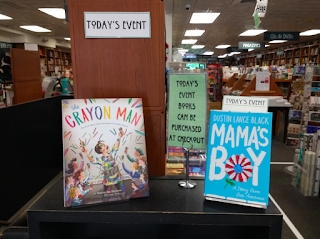
Some of you might recall my post about my 10-step Marketing Plan last year in which I confessed that I’d much rather hide under a rock than do erm . . . marketing, which involves shameless self-promotion and networking and generally being quite visible.
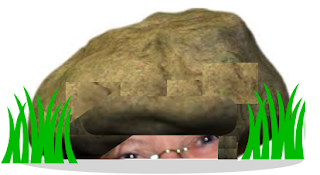 I’m pleased to report that chunking it down and blogging about said plan meant that I actually felt accountable and did all 10 things, plus one more: a mini-author tour.
I’m pleased to report that chunking it down and blogging about said plan meant that I actually felt accountable and did all 10 things, plus one more: a mini-author tour. Because THE CRAYON MAN: THE TRUE STORY OF THE INVENTION OF CRAYOLA CRAYONS is published by Houghton Mifflin Harcourt in the US, I was thrilled when I found out that I’d been awarded the 2018 SCBWI Book Launch Award so now I had some funding. By staying with generous friends and family, I was able to keep costs manageable and extend my tour to two weeks.
But how to begin?
Here are 5 insights I gained from the process that I hope might help other authors and illustrators:
1. Find a dopplegänger because you’ll need a ton of time to arrange everything yourself, unless, of course, your publisher is generous enough to fund a publicist to help you do some of the legwork. In addition to the usual marketing and promotion, the book tour required additional and unexpected time to organize.
- Start early! Be aware of school timetables so that you can try to avoid holidays, busy times, testing times, end of year field-trip times, etc. etc.
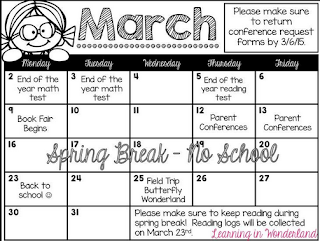
- Ask your publicist, other authors/illustrators, friends and family for contacts for schools, school and public libraries and booksellers. You can also find many of these online.
Create a wishlist.
2. Figure out a system for keeping track of all the details as they come in and for following up: for each place you visit, you’ll need obvious things like times and contact details, but also to have agreed advertising for your event (see media pack below), parking, number of kids in the audience, AV equipment, flipchart, etc. There was a lot of back and forth to confirm everything!
- Create a media kit: From your website, you can link to a google.docs file, in which you can create a downloadable media kit – this will save time! – with your bio (long and short), photos, reviews, links to your social media, blogs, website, information about your books, and latest news.
3. Independent booksellers are key! I reached out to indies in the places I wanted to visit and found they would be keen to hook me up with local schools. It’s a win-win – they can pre-sell your book and you do a short storytelling assembly in return. Unless you are visiting affluent private schools, the understanding is that there is no charge for these sessions.
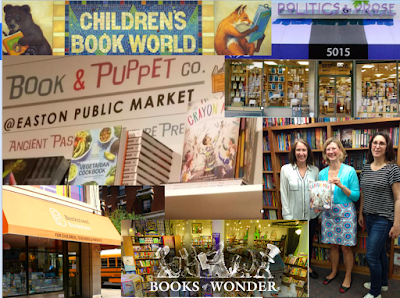 Contact booksellers at independent bookshops -
Contact booksellers at independent bookshops -or ask friends to reach out to their local shop and put you in touch!
- Write a pitch for your book. Create a press release ( including any good reviews!)
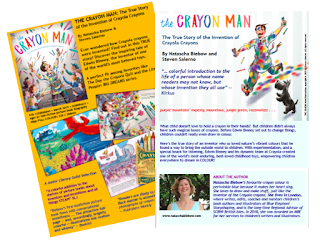
and a flyer about your school visits.
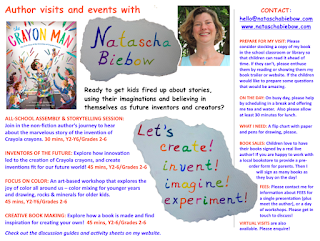 Craft a professional and friendly email. Link to your book trailer if you have one.
Craft a professional and friendly email. Link to your book trailer if you have one.Then wait . . . and wait . . .
- Be prepared to pick up the phone. Though I sent emails, sometimes, I wasn’t able to progress anything until I spoke to the busy bookseller on the phone to find out if they would be prepared to collaborate. Doing this, gave me an instant sense of what kinds of possibilities (or NOT!) would be available.
4. Where else should you go? Think outside the box!
Some bookshops and libraries have regular storytelling sessions, but I found that these seemed to be mostly aimed at very young children. Often for events, bookshops requested a Saturday, and well, there are only so many Saturdays if you’re doing a two-week tour. Some bookshops also run half-term festivals that can be good opportunities.
I really enjoyed visiting bookshops and connecting with booksellers, but generally speaking, the audiences were quite small.
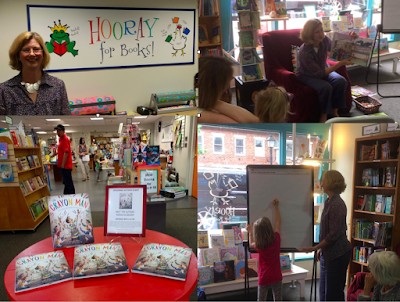 My Saturday event at Hooray for Books in Arlington, VA,
My Saturday event at Hooray for Books in Arlington, VA, though widely promoted drew a small audience.
I found that by working with the booksellers instead to set up school visits, meant I could connect with more kids, teachers and librarians and consequently sell more copies of my book.
- Consider alternative opportunities! Does your book tie in with some kind of local interest or museum or lend itself to an activity? One of the most successful events of my mini book tour was a Saturday stall at the Easton Farmers’ Market, in Easton, PA, home of the Crayola crayon. A simple craft activity drew in kids, and I was able to hand-sell my book to parents. Plus it was fun! They also invited me to help launch a new initiative - the Easton Book Festival, that will take place this Fall.
 Easton Farmers' Market event
Easton Farmers' Market event 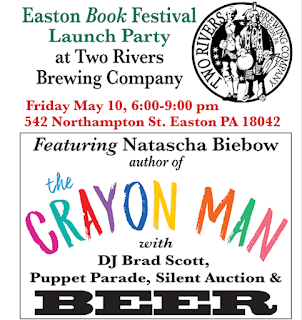 I was invited to help launch the new Easton Book Festival
I was invited to help launch the new Easton Book Festival - Even if you aren’t able to agree on an actual author visit, offer to stop by and sign stock. In this way, you make a personal contact with a bookseller and provide autographed books that consumers will like!
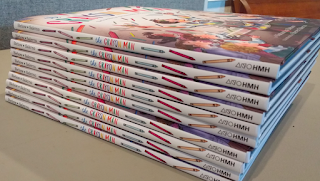
- Think about how you’ll personalize each book – can you make it fun? I had a crayon stamp made and invested in a set of coloured Sharpies.
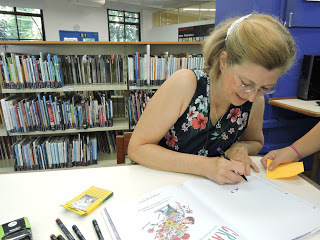
5. Create a cracking presentation that you can adapt to the audience and the amount of time available. For a long time I was stuck on this. I looked on in awe at all the other professional authors and illustrators doing school events and wondered how I would ever be able to come up with something great. But then I realized something key – I needed to make it true to me and my book. Who was I as an author? What kinds of stories did I like to write and tell? And how could the kids in the audience interact and have fun live during the presentation?
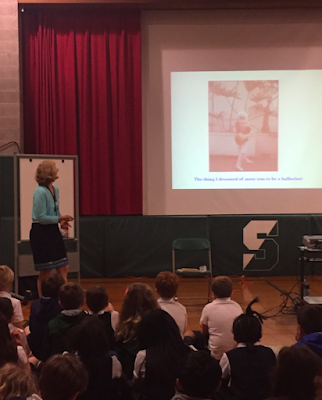 I decided to create a guessing game about my dream job as a child . . .
I decided to create a guessing game about my dream job as a child . . .The other thing that I was stuck on was an opener. If you tell good jokes or can draw, these are easy ways to grab young audiences right off the bat. But I am neither . . . What I discovered is that my opener needed to be something that started a conversation with the audience and made a personal connection with them.
- I put together my presentation in a series of slides in Keynote. This way all the children could see the images, even in a large group.
- I practised over and over with my new clicker until I knew the presentation by heart. I made and bought props.
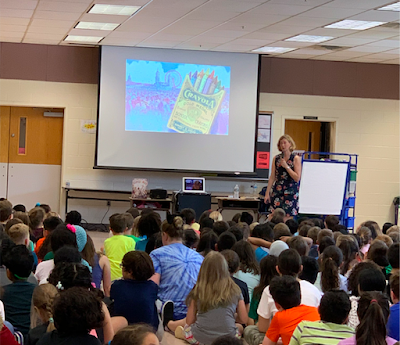 Slides help all the children view the images clearly in a larger audience.
Slides help all the children view the images clearly in a larger audience.- As the tour came together, I realized that though my ideal was a 45-minute presentation that allowed time for drawing (with Crayola crayons of course!) and questions, I needed a version that was short (25-30 minutes long). I also created a version of my presentation that I could use in a library or bookshop setting if the audience was made up of aspiring creatives and mostly grown-ups interested in the non-fiction topic of my book.
- I printed out a set of key slides onto A3. I shared these in smaller ad-hoc presentations in bookshops and libraries, and in case of tech failure.
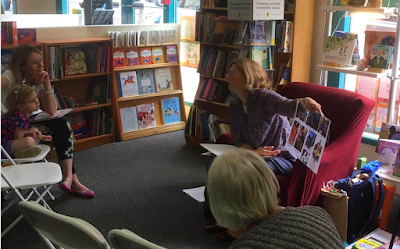 In smaller groups, I used props and A3 printouts
In smaller groups, I used props and A3 printouts - I invested in a portable speaker and a 3-way adaptor so I’d be prepared to hook up to all varieties of available AV equipment. I also loaded my presentation onto a USB stick. Include replacement batteries!
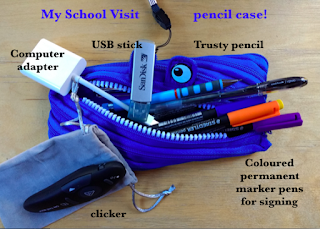
- For each stop, I allowed at least half an hour to meet my contact, confirm the details of timings and get set-up.
Prepare for the unexpected!
- A simple, craft activity (Thank you, Jane Clarke!) that can be used in addition to colouring is useful for smaller bookshop visits when you've run out of things to say or the kids are too young for your book.
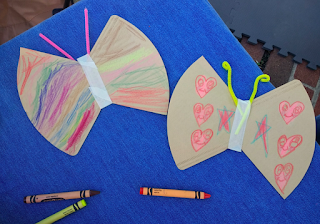 Oh, the things you can make with coffee filters!- Uh, oh, I didn't sign up for this! At one school, my presentation took place in a school cafetaria: The lunch clear-up was underway, which didn’t allow very much time to set-up. In addition, the audience was comprised of 500 kids (way more than usual numbers). It was hot, it was after lunch. I needed to be prepared to manage a larger group or a set of jumpy kids.
Oh, the things you can make with coffee filters!- Uh, oh, I didn't sign up for this! At one school, my presentation took place in a school cafetaria: The lunch clear-up was underway, which didn’t allow very much time to set-up. In addition, the audience was comprised of 500 kids (way more than usual numbers). It was hot, it was after lunch. I needed to be prepared to manage a larger group or a set of jumpy kids. I wanted to get my young audience to get excited about my presentation, but also needed a way to regain calm. I did this in two ways – I used the pacing of my presentation, interspersing me talking with interactive bits where the kids came up to draw and a really short video about the production of Crayola crayons. I also observed how teachers got the kids to quiet down at the start and used this as a way to re-gain their attention when excitement levels rose. Another great way to get kids to focus is by using rhythmical clapping that they repeat.
- If you have a very large group, it can be helpful to ask teachers to choose volunteers.
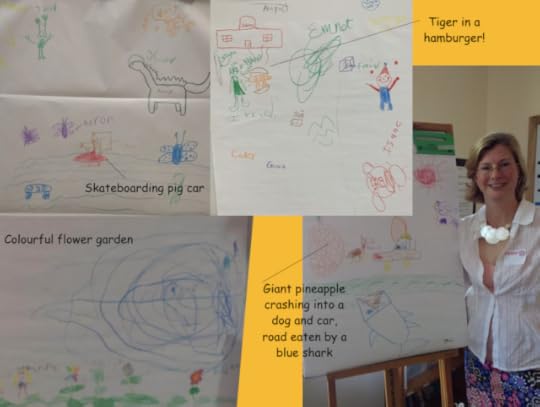 We did some group drawings with Crayola crayons - the audience suggested what each of the eight volunteers -
We did some group drawings with Crayola crayons - the audience suggested what each of the eight volunteers -who represented the first 8 Crayola crayon colours invented by Binney – should draw!
- Questions . . . be prepared to get odd questions that you won’t know how to answer. Like how much you earn and what year Crayola first made markers.
Top tip!
There is so much going on that sometimes I forgot to ask someone to take a photo at my events! If you have snaps of your presentation (taken from the back so as not to show kids' faces) or of the kids' drawings, you can post on social media to create a buzz about your book.
5*: SMILE AND HAVE FUN!
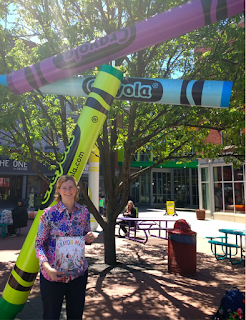
Afterwards . . .
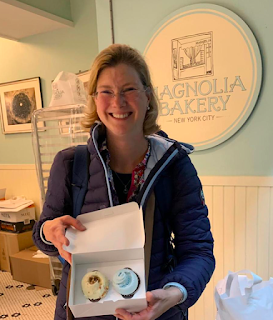
- Defnintely eat CAKE. You deserve it!
- Send out thank you notes and ask for testimonials that you can post on your website.
- Create the next book.
Have you got any author visit
tips to share?
________________________________________________________________
Natascha Biebow, MBE, Author, Editor and Mentor
 Natascha is the author of The Crayon Man: The True Story of the Invention of Crayola Crayons, illustrated by Steven Salerno, Elephants Never Forget and Is This My Nose?, editor of numerous award-winning children’s books, and Co-Regional Advisor (Co-Chair) of SCBWI British Isles. She is currently working on more non-fiction and a series of young fiction. She runs Blue Elephant Storyshaping, an editing, coaching and mentoring service aimed at empowering writers and illustrators to fine-tune their work pre-submission. Find her at www.nataschabiebow.com
Natascha is the author of The Crayon Man: The True Story of the Invention of Crayola Crayons, illustrated by Steven Salerno, Elephants Never Forget and Is This My Nose?, editor of numerous award-winning children’s books, and Co-Regional Advisor (Co-Chair) of SCBWI British Isles. She is currently working on more non-fiction and a series of young fiction. She runs Blue Elephant Storyshaping, an editing, coaching and mentoring service aimed at empowering writers and illustrators to fine-tune their work pre-submission. Find her at www.nataschabiebow.com<!-- /* Font Definitions */ @font-face {font-family:"MS 明朝"; panose-1:0 0 0 0 0 0 0 0 0 0; mso-font-charset:128; mso-generic-font-family:roman; mso-font-format:other; mso-font-pitch:fixed; mso-font-signature:1 134676480 16 0 131072 0;} @font-face {font-family:"MS 明朝"; panose-1:0 0 0 0 0 0 0 0 0 0; mso-font-charset:128; mso-generic-font-family:roman; mso-font-format:other; mso-font-pitch:fixed; mso-font-signature:1 134676480 16 0 131072 0;} @font-face {font-family:Calibri; panose-1:2 15 5 2 2 2 4 3 2 4; mso-font-charset:0; mso-generic-font-family:auto; mso-font-pitch:variable; mso-font-signature:-520092929 1073786111 9 0 415 0;} /* Style Definitions */ p.MsoNormal, li.MsoNormal, div.MsoNormal {mso-style-unhide:no; mso-style-qformat:yes; mso-style-parent:""; margin:0cm; margin-bottom:.0001pt; mso-pagination:widow-orphan; font-size:12.0pt; font-family:"Times New Roman"; mso-fareast-font-family:"MS 明朝"; mso-fareast-theme-font:minor-fareast; mso-ansi-language:EN-US;} .MsoChpDefault {mso-style-type:export-only; mso-default-props:yes; font-size:10.0pt; mso-ansi-font-size:10.0pt; mso-bidi-font-size:10.0pt; mso-fareast-font-family:"MS 明朝"; mso-fareast-theme-font:minor-fareast; mso-fareast-language:JA;} @page WordSection1 {size:595.0pt 842.0pt; margin:72.0pt 90.0pt 72.0pt 90.0pt; mso-header-margin:35.4pt; mso-footer-margin:35.4pt; mso-paper-source:0;} div.WordSection1 {page:WordSection1;} -->
Published on June 02, 2019 19:00
Top 5 Tips for A Succesful Author Tour • by Natascha Biebow

Some of you might recall my post about my 10-step Marketing Plan last year in which I confessed that I’d much rather hide under a rock than do erm . . . marketing, which involves shameless self-promotion and networking and generally being quite visible.
 I’m pleased to report that chunking it down and blogging about said plan meant that I actually felt accountable and did all 10 things, plus one more: a mini-author tour.
I’m pleased to report that chunking it down and blogging about said plan meant that I actually felt accountable and did all 10 things, plus one more: a mini-author tour. Because THE CRAYON MAN: THE TRUE STORY OF THE INVENTION OF CRAYOLA CRAYONS is published by Houghton Mifflin Harcourt in the US, I was thrilled when I found out that I’d been awarded the 2018 SCBWI Book Launch Award so now I had some funding. By staying with generous friends and family, I was able to keep costs manageable and extend my tour to two weeks.
But how to begin?
Here are 5 insights I gained from the process that I hope might help other authors and illustrators:
1. Find a dopplegänger because you’ll need a ton of time to arrange everything yourself, unless, of course, your publisher is generous enough to fund a publicist to help you do some of the legwork. In addition to the usual marketing and promotion, the book tour required additional and unexpected time to organize.
- Start early! Be aware of school timetables so that you can try to avoid holidays, busy times, testing times, end of year field-trip times, etc. etc.

- Ask your publicist, other authors/illustrators, friends and family for contacts for schools, school and public libraries and booksellers. You can also find many of these online.
Create a wishlist.
2. Figure out a system for keeping track of all the details as they come in and for following up: for each place you visit, you’ll need obvious things like times and contact details, but also to have agreed advertising for your event (see media pack below), parking, number of kids in the audience, AV equipment, flipchart, etc. There was a lot of back and forth to confirm everything!
- Create a media kit: From your website, you can link to a google.docs file, in which you can create a downloadable media kit – this will save time! – with your bio (long and short), photos, reviews, links to your social media, blogs, website, information about your books, and latest news.
3. Independent booksellers are key! I reached out to indies in the places I wanted to visit and found they would be keen to hook me up with local schools. It’s a win-win – they can pre-sell your book and you do a short storytelling assembly in return. Unless you are visiting affluent private schools, the understanding is that there is no charge for these sessions.
 Contact booksellers at independent bookshops -
Contact booksellers at independent bookshops -or ask friends to reach out to their local shop and put you in touch!
- Write a pitch for your book. Create a press release ( including any good reviews!)

and a flyer about your school visits.
 Craft a professional and friendly email. Link to your book trailer if you have one.
Craft a professional and friendly email. Link to your book trailer if you have one.Then wait . . . and wait . . .
- Be prepared to pick up the phone. Though I sent emails, sometimes, I wasn’t able to progress anything until I spoke to the busy bookseller on the phone to find out if they would be prepared to collaborate. Doing this, gave me an instant sense of what kinds of possibilities (or NOT!) would be available.
4. Where else should you go? Think outside the box!
Some bookshops and libraries have regular storytelling sessions, but I found that these seemed to be mostly aimed at very young children. Often for events, bookshops requested a Saturday, and well, there are only so many Saturdays if you’re doing a two-week tour. Some bookshops also run half-term festivals that can be good opportunities.
I really enjoyed visiting bookshops and connecting with booksellers, but generally speaking, the audiences were quite small.
 My Saturday event at Hooray for Books in Arlington, VA,
My Saturday event at Hooray for Books in Arlington, VA, though widely promoted drew a small audience.
I found that by working with the booksellers instead to set up school visits, meant I could connect with more kids, teachers and librarians and consequently sell more copies of my book.
- Consider alternative opportunities! Does your book tie in with some kind of local interest or museum or lend itself to an activity? One of the most successful events of my mini book tour was a Saturday stall at the Easton Farmers’ Market, in Easton, PA, home of the Crayola crayon. A simple craft activity drew in kids, and I was able to hand-sell my book to parents. Plus it was fun! They also invited me to help launch a new initiative - the Easton Book Festival, that will take place this Fall.
 Easton Farmers' Market event
Easton Farmers' Market event  I was invited to help launch the new Easton Book Festival
I was invited to help launch the new Easton Book Festival - Even if you aren’t able to agree on an actual author visit, offer to stop by and sign stock. In this way, you make a personal contact with a bookseller and provide autographed books that consumers will like!

- Think about how you’ll personalize each book – can you make it fun? I had a crayon stamp made and invested in a set of coloured Sharpies.

5. Create a cracking presentation that you can adapt to the audience and the amount of time available. For a long time I was stuck on this. I looked on in awe at all the other professional authors and illustrators doing school events and wondered how I would ever be able to come up with something great. But then I realized something key – I needed to make it true to me and my book. Who was I as an author? What kinds of stories did I like to write and tell? And how could the kids in the audience interact and have fun live during the presentation?
 I decided to create a guessing game about my dream job as a child . . .
I decided to create a guessing game about my dream job as a child . . .The other thing that I was stuck on was an opener. If you tell good jokes or can draw, these are easy ways to grab young audiences right off the bat. But I am neither . . . What I discovered is that my opener needed to be something that started a conversation with the audience and made a personal connection with them.
- I put together my presentation in a series of slides in Keynote. This way all the children could see the images, even in a large group.
- I practised over and over with my new clicker until I knew the presentation by heart. I made and bought props.
 Slides help all the children view the images clearly in a larger audience.
Slides help all the children view the images clearly in a larger audience.- As the tour came together, I realized that though my ideal was a 45-minute presentation that allowed time for drawing (with Crayola crayons of course!) and questions, I needed a version that was short (25-30 minutes long). I also created a version of my presentation that I could use in a library or bookshop setting if the audience was made up of aspiring creatives and mostly grown-ups interested in the non-fiction topic of my book.
- I printed out a set of key slides onto A3. I shared these in smaller ad-hoc presentations in bookshops and libraries, and in case of tech failure.
 In smaller groups, I used props and A3 printouts
In smaller groups, I used props and A3 printouts - I invested in a portable speaker and a 3-way adaptor so I’d be prepared to hook up to all varieties of available AV equipment. I also loaded my presentation onto a USB stick. Include replacement batteries!

- For each stop, I allowed at least half an hour to meet my contact, confirm the details of timings and get set-up.
Prepare for the unexpected!
- A simple, craft activity (Thank you, Jane Clarke!) that can be used in addition to colouring is useful for smaller bookshop visits when you've run out of things to say or the kids are too young for your book.
 Oh, the things you can make with coffee filters!- Uh, oh, I didn't sign up for this! At one school, my presentation took place in a school cafetaria: The lunch clear-up was underway, which didn’t allow very much time to set-up. In addition, the audience was comprised of 500 kids (way more than usual numbers). It was hot, it was after lunch. I needed to be prepared to manage a larger group or a set of jumpy kids.
Oh, the things you can make with coffee filters!- Uh, oh, I didn't sign up for this! At one school, my presentation took place in a school cafetaria: The lunch clear-up was underway, which didn’t allow very much time to set-up. In addition, the audience was comprised of 500 kids (way more than usual numbers). It was hot, it was after lunch. I needed to be prepared to manage a larger group or a set of jumpy kids. I wanted to get my young audience to get excited about my presentation, but also needed a way to regain calm. I did this in two ways – I used the pacing of my presentation, interspersing me talking with interactive bits where the kids came up to draw and a really short video about the production of Crayola crayons. I also observed how teachers got the kids to quiet down at the start and used this as a way to re-gain their attention when excitement levels rose. Another great way to get kids to focus is by using rhythmical clapping that they repeat.
- If you have a very large group, it can be helpful to ask teachers to choose volunteers.
 We did some group drawings with Crayola crayons - the audience suggested what each of the eight volunteers -
We did some group drawings with Crayola crayons - the audience suggested what each of the eight volunteers -who represented the first 8 Crayola crayon colours invented by Binney – should draw!
- Questions . . . be prepared to get odd questions that you won’t know how to answer. Like how much you earn and what year Crayola first made markers.
Top tip!
There is so much going on that sometimes I forgot to ask someone to take a photo at my events! If you have snaps of your presentation (taken from the back so as not to show kids' faces) or of the kids' drawings, you can post on social media to create a buzz about your book.
5*: SMILE AND HAVE FUN!

Afterwards . . .

- Defnintely eat CAKE. You deserve it!
- Send out thank you notes and ask for testimonials that you can post on your website.
- Create the next book.
Have you got any author visit
tips to share?
________________________________________________________________
Natascha Biebow, MBE, Author, Editor and Mentor
 Natascha is the author of The Crayon Man: The True Story of the Invention of Crayola Crayons, illustrated by Steven Salerno, Elephants Never Forget and Is This My Nose?, editor of numerous award-winning children’s books, and Co-Regional Advisor (Co-Chair) of SCBWI British Isles. She is currently working on more non-fiction and a series of young fiction. She runs Blue Elephant Storyshaping, an editing, coaching and mentoring service aimed at empowering writers and illustrators to fine-tune their work pre-submission. Find her at www.nataschabiebow.com
Natascha is the author of The Crayon Man: The True Story of the Invention of Crayola Crayons, illustrated by Steven Salerno, Elephants Never Forget and Is This My Nose?, editor of numerous award-winning children’s books, and Co-Regional Advisor (Co-Chair) of SCBWI British Isles. She is currently working on more non-fiction and a series of young fiction. She runs Blue Elephant Storyshaping, an editing, coaching and mentoring service aimed at empowering writers and illustrators to fine-tune their work pre-submission. Find her at www.nataschabiebow.com<!-- /* Font Definitions */ @font-face {font-family:"MS 明朝"; panose-1:0 0 0 0 0 0 0 0 0 0; mso-font-charset:128; mso-generic-font-family:roman; mso-font-format:other; mso-font-pitch:fixed; mso-font-signature:1 134676480 16 0 131072 0;} @font-face {font-family:"MS 明朝"; panose-1:0 0 0 0 0 0 0 0 0 0; mso-font-charset:128; mso-generic-font-family:roman; mso-font-format:other; mso-font-pitch:fixed; mso-font-signature:1 134676480 16 0 131072 0;} @font-face {font-family:Calibri; panose-1:2 15 5 2 2 2 4 3 2 4; mso-font-charset:0; mso-generic-font-family:auto; mso-font-pitch:variable; mso-font-signature:-520092929 1073786111 9 0 415 0;} /* Style Definitions */ p.MsoNormal, li.MsoNormal, div.MsoNormal {mso-style-unhide:no; mso-style-qformat:yes; mso-style-parent:""; margin:0cm; margin-bottom:.0001pt; mso-pagination:widow-orphan; font-size:12.0pt; font-family:"Times New Roman"; mso-fareast-font-family:"MS 明朝"; mso-fareast-theme-font:minor-fareast; mso-ansi-language:EN-US;} .MsoChpDefault {mso-style-type:export-only; mso-default-props:yes; font-size:10.0pt; mso-ansi-font-size:10.0pt; mso-bidi-font-size:10.0pt; mso-fareast-font-family:"MS 明朝"; mso-fareast-theme-font:minor-fareast; mso-fareast-language:JA;} @page WordSection1 {size:595.0pt 842.0pt; margin:72.0pt 90.0pt 72.0pt 90.0pt; mso-header-margin:35.4pt; mso-footer-margin:35.4pt; mso-paper-source:0;} div.WordSection1 {page:WordSection1;} -->
Published on June 02, 2019 19:00
May 27, 2019
Why Are We Afraid of the Dark? by Timothy Knapman
The great writer and illustrator Tomi Ungerer died this year. I was very fortunate to see him a few years ago at Waterstone’s in Piccadilly, launching a “treasury” of six of his books that Phaidon were publishing. He was in his mid-eighties but still as spry and as sly as ever.
Gripping his walking stick and looking like an Old Testament prophet who had spent more than his fair share of time in the wilderness, he was full of firmly held and not-to-be-questioned opinions: principally, that anyone who wanted to write picture books should teach themselves to draw because it was imperative that they illustrate them as well. I’m not sure I agree with him on that, but something else he said did resonate with me. For years, he told us, he’d been trying to get his books republished but in vain (the Phaidon edition is excellent, but it’s large and expensive: more an exercise in nostalgia for those of us who read him years ago than a practical way to introduce him to younger readers).
I think I know why. I loved Tomi for his storytelling and for his visual style (the éclair-like fingers and pudgy, good-enough-to-eat limbs and faces looked almost like the work of an especially witty pâtissier) but most of all for what we would now call his “darkness”.
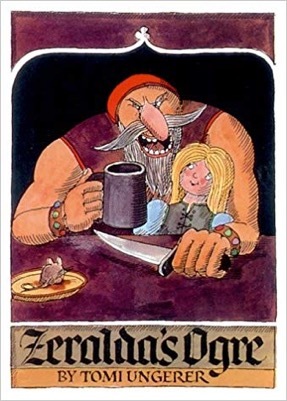 Zeralda’s Ogre by Tomi Ungerer
Zeralda’s Ogre by Tomi UngererMy favourite of his books – one of the few picture books I still own from my childhood – is called Zeralda’s Ogre. Zeralda is a farmer’s daughter, a girl of pluck and resource who is also a wonderful cook. One market day, her father falls ill so Zeralda elects to take the farm’s produce to the local town to sell it (the setting seems to be a fairy tale nowhere land in the vicinity of Ungerer’s native Alsace). What Zeralda does not know is that the town has been living in fear of a terrible ogre who eats children. Parents have taken to hiding their children away so that they won’t get carried off. Good news for the children, bad news for the ogre, who has had nothing to eat for a long time now. So imagine his joy when he sees little Zeralda on her cart, heading heedlessly straight into town. He waits until the right moment and pounces on her. Only his senses have been dimmed by lack of food and he misses the cart, falling on the road and bashing his head. Zeralda – not knowing he’s an ogre – takes pity on this apparently poor, injured man, bandaging his head and cooking up some of her farm produce as she nurses him back to health.
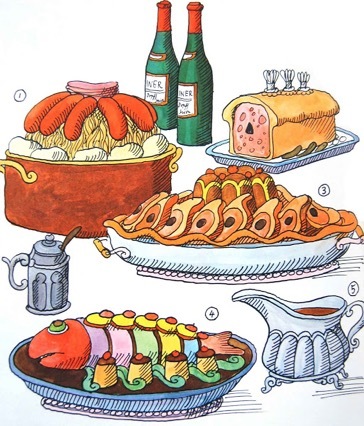
The first mouthful is a revelation to the ogre – there’s something that tastes even nicer than children! – so Zeralda cooks him a banquet of ever more wonderful dishes (for some reason, “Chocolate sauce Rasputin” and “Pompano Sarah Bernhardt” always stuck in my memory) until he gives up on the whole being-an-ogre business. The parents of the town let their children out to play safely in the streets again. The ogre shaves off his beard and, when she is old enough, marries Zeralda. On the last page, we see a picture of the happy family; proud parents Zeralda and her ex-ogre are surrounded by their offspring and Zeralda has a baby in her arms. One of her older children leans over his new-born sibling, apparently adoringly. But behind his back – visible to us but not to his parents – he holds a knife and fork.
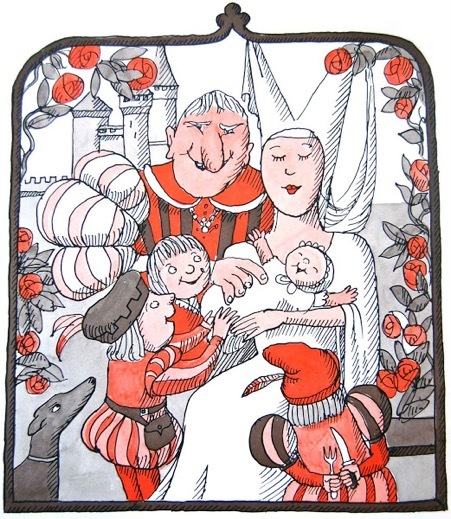
I don’t know why that image has stayed with me ever since. I do remember thinking it was funny rather than scary. I was a ghoulish child, I suppose. But – more than that – it’s the subversiveness of the image, the feeling that “you’re not supposed to do that! How did he get away with it?” that was – and remains – truly thrilling. It was a glimpse of a world beyond the safe and saccharine fare that comprised the bulk of what was on offer to children then, and is even more prevalent today.
Because - as Tomi Ungerer discovered - there is no way you could get a book like that published now. Public taste in children’s books has turned decisively against anything that might be thought to be in anyway scary or upsetting. And that is a huge shame – and a great loss, I think, for the current generation of children.
Don’t get me wrong, I love my young readers (it may sound pretentious to say it, but writing is an act of love: it has to be or it’s not worth doing); I don’t want to give children nightmares and I don’t want to upset or traumatise them. Of course I understand that loving parents want to keep bad and hurtful things away from them. But it worries me that the books they are allowed to read nowadays deliberately avoid territory that used to be part of the landscape of children’s books, limiting the very important job that stories for the young are supposed to perform.
There’s no doubt that the folk and fairy story collections – by the Brothers Grimm and the rest – that stand behind modern children’s literature are full of robustly bloodthirsty stuff. At the end of the original Snow White, the Wicked Queen is made to dance herself to death in red-hot iron shoes. Hansel and Gretel only escape being the main course at a witch’s cannibal banquet by beheading the old woman before she can murder them. And then there are all those big bad wolves waiting to devour you if you take a wrong turning off the forest path.
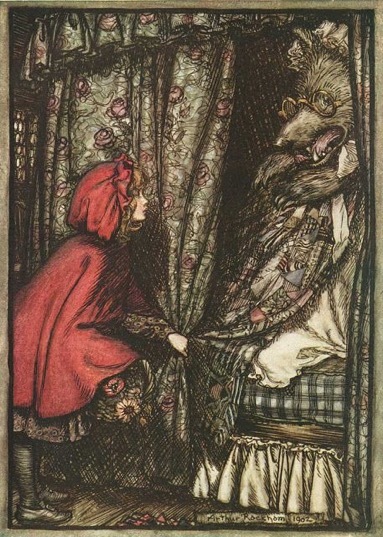 One of Arthur Rackham’s illustrations for Little Red Riding Hood
One of Arthur Rackham’s illustrations for Little Red Riding HoodOf course, these stories were intended, in part at least, to be warnings. When they were being told in the years before the Grimms started writing them down, the countryside was a dangerous place for children. They needed to be taught to keep an eye out for the threats that lurked in the dark places of their world if they were going to stand any chance of making it to adulthood. The perils of the time also accounted for the level of cruelty depicted.
It might be argued that such warnings are no longer needed. Why ruin a child’s bedtime by telling her a story about ravening wolves if she is going to spend her early years constantly supervised by caring adults who’ll spend their lives driving her from home to school to birthday party to sleepover? And it is true that, while the world is still, for many, a dangerous place, the lives of my readers are (thank goodness) infinitely safer and more enjoyable than those of their many-times-great-grandmothers and fathers who grew up in the shadow of the wolf-infested forest.
But metaphorical wolves can be as dangerous as real ones. I am writing this on the day of the European elections (which may explain the dark turn my thoughts have taken) and the polling station where I voted is my local primary school. Its walls are plastered in warnings and exhortations about “school values” and the correct way children should behave towards one another. You don’t have to study them for long to see that today’s children still have problems to confront – about learning to control their antisocial impulses and cope with those of others: about dealing with the darkness inside all of us – just as earlier generations did. The difference is that fiction and the imagination are no longer seen as appropriate places to engage with those problems. There should only be sweetness and light on the bookshelf, at which point the bookshelf becomes a kind of lie because life isn’t like that.
I’m not saying that the principal purpose of children’s books is to tell their young readers how to behave and I know that the time for a book such as Struwwelpeter, with its threat of amputation as a way of discouraging thumb-sucking, has come and gone. I don’t, in fact, like “cautionary tales” except when someone of a particular genius, such as Hilaire Belloc, is writing them, because then you’re not reading for instruction but for entertainment. Art is art and doesn’t need to be useful to justify itself. And that’s the thing about a lot of scary books – one of the reasons I think children should read them is because they’re fun!
Some of the fun is obvious, because a lot of scary books are also very funny. That shouldn’t come as a surprise: fear and amusement are very similar – both provoke a physical response, be it screaming or laughter. Also, comedy is an intellectual process: it resists emotional identification and so makes scary things easier to deal with. Just think of the comedy staple of a man tripping over a banana peel: it’s hilarious providing you remain at a cool intellectual distance from the man and his plight and don’t start to feel for him, and imagine his physical pain and his embarrassment. As Horace Walpole said, “this world is a comedy to those that think, a tragedy to those that feel.”
Call me cool and distant but I think a house is not a home unless it contains a copy of Ruthless Rhymes For Heartless Homes (“Making toast at the fireside,/Nurse fell in the grate and died;/And, what makes it ten times worse,/All the toast was burned with nurse.”). I’m equally certain that your family will be all the happier for spending time with the family created by Charles Addams. One of Addams’ disciples at the New Yorker magazine, the appropriately named Edward Gorey, built brilliantly on his legacy. If you’ve never encountered Gorey’s work, I recommend The Gashlycrumb Tinies, an alphabet of luckless children and how they died: “M is for Maud who was swept out to sea/N is for Neville who died of ennui.” And in Gorey’s wake came Lemony Snicket and his Series of Unfortunate Events (who said Americans don’t do irony? That’s three generations of it).
 The Gashlycrumb Tinies by Edward Gorey
The Gashlycrumb Tinies by Edward GoreyApart from Snicket (real name Daniel Handler, born 1970), those writers and illustrators belong to an earlier age, and it’s only because some of them are too big and canonical to ignore that modern children have a chance to read them. On this side of the Atlantic, the great example of that is Roald Dahl. A reclusive chocolate factory owner who carelessly tortures and punishes the children he disapproves of? A coven of witches plotting to turn children into mice so that their parents and teachers will stamp and poison them to death? Dahl had problems getting published in the 1960s and ’70s, but I think I can confidently say that no writer submitting similar material now would have any hope of having it accepted. You only have to look at the books of the Dahl-lite David Walliams. They’re designed and illustrated to look like Dahl, in a clear attempt to place Walliams in a line of succession, but there’s no way he would ever stray into territory as troubling as his infinitely superior precursor.
 Quentin Blake’s picture of Roald Dahl’s Grand High Witch doing her worst
Quentin Blake’s picture of Roald Dahl’s Grand High Witch doing her worstWhich is, as I keep saying, a shame. For not only can scary books be fun, I believe that they are also a necessary part of a child’s reading. I believe that we are ineluctably drawn to the darkness as children – at least in our imaginations – despite the fact that we know bad things await us there. It’s partly curiosity about the unknown – and human beings have always been unfailingly curious creatures. But it’s mostly because in the world of the imagination, in the safe space provided by books, we have a chance to practise having emotions: joy and sorrow and envy and wonder, but also fear.
I think it’s an evolutionary advantage, hard-wired into us, perhaps even the reason we have an imagination at all. A self-conscious creature such as a human being wouldn’t last long if her first experience of fear was the first time she was confronted by actual danger. The shock of the strangeness and power of the emotion would disable her and render her helpless in the face of the threat. I believe that we are naturally disposed to imagine ourselves in many different kinds of danger, so that we can give fear a trial run and learn to master it. That’s why there’s a strange comfort in seeking out the scary, a perverse feeling that we are actually doing something that we are supposed to when we are investigating that which is always forbidding and often forbidden.
I’m not suggesting that all children’s books should be scary. Of course books should be places of joy, of course they should be refuges, sources of relief and reassurance. But they should also help us to live our lives and prepare us for times that are not easy. We may have left the forest far behind but the wolves will follow us forever.
Timothy Knapman has written lots of books that aren’t in the least bit scary. There are funny ones, such as Dinosaurs in the Supermarket and Who’s Afraid of the Big Bad Bogey?; sweet ones, such as Soon, Big Digger Little Digger and What’s Next?; loving ones, such as Superhero Mum, Dad and Gran; adventurous ones, such as Captain Sparklebeard. Those made of sterner stuff are invited to seek out his Little Ogre’s Surprise Supper and Please Said Percy. More at www.timothyknapman.co.uk

Published on May 27, 2019 02:24
May 19, 2019
How to improve your chances of getting published. Advice from commissioning editor Laura Roberts
I was invited to write this piece by author and Picture Book Den blogger, Lucy Rowland. I’ve known Lucy for a few years now, having had the privilege of commissioning, editing and publishing several of her picture book stories and establishing a firm friendship with her in the process. That’s one of the many brilliant things about my job - the people I meet and the relationships I build with them. Another wonderful perk of what I do is discovering new talent and stories.
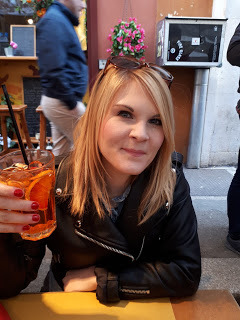
I’ve worked in children’s publishing for over 13 years, mainly as en editor and for various leading publishers including Bloomsbury, Macmillan, Egmont, Oxford University Press, Little Tiger Press and Scholastic. The one thing that has remained the same throughout all that time is the excitement I get when I come across a new story or an author or illustrator with a really special quality.
That is exactly what happened when Lucy’s agent, Anne Clark, sent me the text for Little Red Reading Hood. I’ve seen many rewritings of fairytales, but this one was utterly unique. Not only because of its wonderful celebration of reading and stories, nor because it is so beautifully written in Lucy’s inimitable lyrical style, but because the story is completely full of heart. This was a rare occasion where the text was signed almost on the spot and the illustrations just clicked into place because the fantastic Ben Mantle was the only illustrator we could imagine for the job.
Not all picture books happen this way. Sometimes a story idea lands in the right place at the right time when a publisher has a specific topic in mind, and other times an idea just really captures a publisher’s interest and imagination. So there is no one specific method to ensure success in getting published, but there are ways for an author to improve their chances:
1) Research the marketplace. Visit bookshops and look at online booksellers to see what is available and what people are buying. It’s always good for an author to stay in touch with what is happening in the marketplace, no matter how long they have been writing or how many books they have had published. Trends and conditions change all the time. 2) Be aware of your audience. When coming up with an idea, consider whether booksellers would be able to sell the story based on your market research. Will children connect with it? And will adults enjoy reading it to children time-and-again?3) Keep abreast of current affairs. Book trends are often influenced by subjects that have become topical, so publishers are always on the lookout for story ideas that tap into current affairs. At present, for example, environment and mental health and wellbeing are popular picture book themes. 4) Don’t be prescriptive about the illustrations. It’s good for an author to have a sense of how they imagine their story may look, but unless they are illustrating the story as well, it is best to avoid including too many illustration notes and direction as illustrators need to have creative freedom, plus publishers will have a grasp on how to make a book look right for the marketplace. Authors will always be shown work in progress illustrations, so they do get opportunity to be involved.5) Network. There’s a strong online community of authors and illustrators on Twitter and Instagram, so this is a great way to engage in publishing conversation and news. It’s also a good opportunity to make contact with agents, editors and designers and make them aware of you and your work. If you’re looking for more guidance and support then it could be beneficial to join an organisation such as the Society of Children’s Book Writers and Illustrators (SCBWI).6) Seek advice. Speak to as many people involved in children’s books as possible and ask the questions that you want answers to. Even ask people to look at your work - but be willing to take in feedback and suggestions for development.7) Consider an agent. Agent representation isn’t for everyone, but if you are considering it, do your research into where you would be a good fit. Don’t be afraid to make contact and send an agent your work - but make sure you have a number of texts to show them first.8) Don’t give up! As the phrase goes, “If at first you don’t succeed, try, try again.” Even established authors receive rejections. If a story idea doesn’t get picked up by a publisher, then park it and move on to a new idea. There is every chance that this story could get another opportunity at a different time.
Of course there are illustrators who are keen to write too. Sometimes an illustrator will tell me they have a story idea and want to try their hand at writing it themselves but don’t know how to start. My advice is to tell the story the way an illustrator knows best - in visuals - and then add the words after.
This is just a part of another great aspect of my job: variety. The making of no two picture books is ever the same. Whether it’s an author and illustrator paired together, an author-illustrator creating the whole picture book, a debut or a highly experienced author or illustrator, the creative process always throws up new experiences and surprises, and as an editor I am always learning new things. I feel very privileged that I get to work with so many talented people who place trust in me with their art.
Since becoming a mum to my own little human a couple of months ago, I’ve been taking a little time out from working in a publishing house and instead working solo as an editorial consultant. It’s been a wonderful experience to make contact with aspiring authors and see their work develop and evolve. When an author I’ve worked with has a story published, it is a very proud moment for me too!
If you want to get in touch with me for professional consultation on your own story ideas then drop me a direct message on my twitter handle @EditorJangles

I’ve worked in children’s publishing for over 13 years, mainly as en editor and for various leading publishers including Bloomsbury, Macmillan, Egmont, Oxford University Press, Little Tiger Press and Scholastic. The one thing that has remained the same throughout all that time is the excitement I get when I come across a new story or an author or illustrator with a really special quality.
That is exactly what happened when Lucy’s agent, Anne Clark, sent me the text for Little Red Reading Hood. I’ve seen many rewritings of fairytales, but this one was utterly unique. Not only because of its wonderful celebration of reading and stories, nor because it is so beautifully written in Lucy’s inimitable lyrical style, but because the story is completely full of heart. This was a rare occasion where the text was signed almost on the spot and the illustrations just clicked into place because the fantastic Ben Mantle was the only illustrator we could imagine for the job.
Not all picture books happen this way. Sometimes a story idea lands in the right place at the right time when a publisher has a specific topic in mind, and other times an idea just really captures a publisher’s interest and imagination. So there is no one specific method to ensure success in getting published, but there are ways for an author to improve their chances:
1) Research the marketplace. Visit bookshops and look at online booksellers to see what is available and what people are buying. It’s always good for an author to stay in touch with what is happening in the marketplace, no matter how long they have been writing or how many books they have had published. Trends and conditions change all the time. 2) Be aware of your audience. When coming up with an idea, consider whether booksellers would be able to sell the story based on your market research. Will children connect with it? And will adults enjoy reading it to children time-and-again?3) Keep abreast of current affairs. Book trends are often influenced by subjects that have become topical, so publishers are always on the lookout for story ideas that tap into current affairs. At present, for example, environment and mental health and wellbeing are popular picture book themes. 4) Don’t be prescriptive about the illustrations. It’s good for an author to have a sense of how they imagine their story may look, but unless they are illustrating the story as well, it is best to avoid including too many illustration notes and direction as illustrators need to have creative freedom, plus publishers will have a grasp on how to make a book look right for the marketplace. Authors will always be shown work in progress illustrations, so they do get opportunity to be involved.5) Network. There’s a strong online community of authors and illustrators on Twitter and Instagram, so this is a great way to engage in publishing conversation and news. It’s also a good opportunity to make contact with agents, editors and designers and make them aware of you and your work. If you’re looking for more guidance and support then it could be beneficial to join an organisation such as the Society of Children’s Book Writers and Illustrators (SCBWI).6) Seek advice. Speak to as many people involved in children’s books as possible and ask the questions that you want answers to. Even ask people to look at your work - but be willing to take in feedback and suggestions for development.7) Consider an agent. Agent representation isn’t for everyone, but if you are considering it, do your research into where you would be a good fit. Don’t be afraid to make contact and send an agent your work - but make sure you have a number of texts to show them first.8) Don’t give up! As the phrase goes, “If at first you don’t succeed, try, try again.” Even established authors receive rejections. If a story idea doesn’t get picked up by a publisher, then park it and move on to a new idea. There is every chance that this story could get another opportunity at a different time.
Of course there are illustrators who are keen to write too. Sometimes an illustrator will tell me they have a story idea and want to try their hand at writing it themselves but don’t know how to start. My advice is to tell the story the way an illustrator knows best - in visuals - and then add the words after.
This is just a part of another great aspect of my job: variety. The making of no two picture books is ever the same. Whether it’s an author and illustrator paired together, an author-illustrator creating the whole picture book, a debut or a highly experienced author or illustrator, the creative process always throws up new experiences and surprises, and as an editor I am always learning new things. I feel very privileged that I get to work with so many talented people who place trust in me with their art.
Since becoming a mum to my own little human a couple of months ago, I’ve been taking a little time out from working in a publishing house and instead working solo as an editorial consultant. It’s been a wonderful experience to make contact with aspiring authors and see their work develop and evolve. When an author I’ve worked with has a story published, it is a very proud moment for me too!
If you want to get in touch with me for professional consultation on your own story ideas then drop me a direct message on my twitter handle @EditorJangles
Published on May 19, 2019 22:00
May 12, 2019
Picture Books That Highlight Climate Change by Chitra Soundar
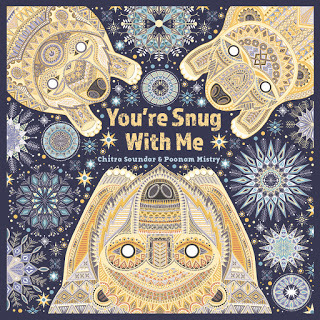
When I wrote You’re Snug With Me (illustrated by Poonam Mistry), it was intended to be a book about a mother reassuring her children of life in their habitat. We had chosen polar bears as our animal mother and children.
As I researched polar bears, I could not ignore the fact that polar bears faced loss of their habitat due to climate change caused by humans. How was I going to tell the polar bear cubs (as their mother) that their ice might be melting, and cause a threat? How could I tell the children who are reading this story that everyone has a role to play in combating climate change?
I created specific questions that the cubs ask about the ice, the oceans and about being the biggest predator in their habitat. And Mama Bear tells them “They must take only what they need.”
It’s been six months since this book came out and now climate change has risen to the top of everyone’s awareness after the climate change strikes by children across the world inspired by Greta Thurnberg.
I also watched the BBC documentary by David Attenborough on the facts of climate-change, and I wanted to explore how this topic is dealt with for younger children (and their parents).
As storytellers, there are different ways to explain to young readers the effect of climate change and the need for action. As a picture book writer, this is an important decision to make. Is the story about conserving energy, or protecting our wildlife or reducing our carbon footprint more impactful as a fable or a fictional story or as pure hard facts.
So I looked at what’s out there for young children on this topic and I found these books dealing with the effects and activism of climate change in different forms of storytelling. There are of course many wonderfully curated lists available if you wanted to research more.
As a fable:
Stories like “The Cloudspinner” by Michael Catchpool tell us a story of excess and how if we take more than we need, we will suffer the consequence. Illustrated by Alison Jay.
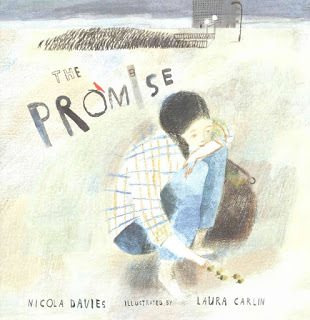 In The Promise, Nicola Davies tells us the story of an old woman who asks for a simple promise – the promise to change not just her own life but the world. Illustrated by Laura Carlin
In The Promise, Nicola Davies tells us the story of an old woman who asks for a simple promise – the promise to change not just her own life but the world. Illustrated by Laura CarlinAs an inspiring tale of activism
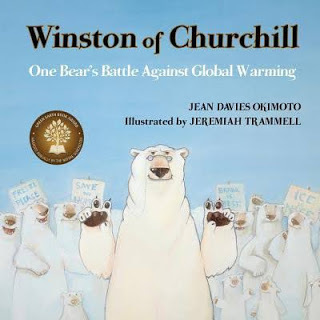
Winston of Churchill (by Jean Davies Okimoto and Jeremiah Trammell) is a funny book about polar bears in Churchill, Canada and Winston who rallies the tourists to save the melting ice. It not only uses a real life example, but also shows us that no matter how small, we all must contribute to saving the planet.
Alison Jay who illustrated The Promise, takes us on a wordless journey in Bee & Me, showing young people how they can help in protecting our natural world.
As a life story
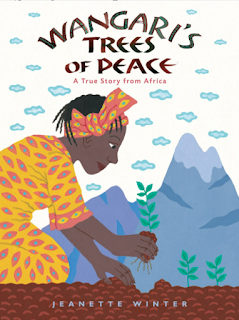
One Plastic Bag (written by Isatou Ceesay, illustrated by Elizabeth Zunon) and Wangari’s Tree of Peace (by Jeannette Winter) both tell us stories of pioneers who tried to change their corner of the world, thus inspiring children and adults everywhere.
As non-fiction
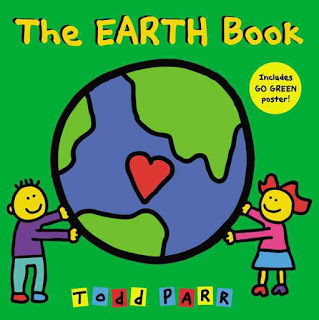
The Earth Book by Todd Parr shows us how we can all do our best to help this planet.
Water Wow! (A Visual Exploration) written by Paula Ayer, Antonia Banyard and illustrated by Belle Wuthrich show us the importance of water and how climate change affects the availability of this important resource.
If you were to write a picture book about climate change – how would you go about it? Which specific topic will you tackle? Which method of storytelling will you adopt? Tell us in the comments.
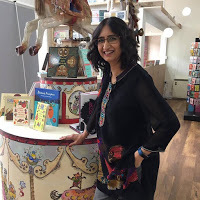 Chitra Soundar is the author of over 40 books for children. Her picture book You’re Snug With Me (illustrated by Poonam Mistry), deals with the anxieties of polar bear cubs whilst also underlining the role of humans in saving our planet. Find out more about her here.
Chitra Soundar is the author of over 40 books for children. Her picture book You’re Snug With Me (illustrated by Poonam Mistry), deals with the anxieties of polar bear cubs whilst also underlining the role of humans in saving our planet. Find out more about her here.
Published on May 12, 2019 23:00
May 5, 2019
Horror In Picture Books, by Pippa Goodhart
I have a new early reader picture book published this month, and it’s a ‘sort of’ retelling of a well-known tale. I say ‘sort of’ because it’s actually very very different from that well-known tale. Why? Because the original story is horrific! Working on adapting that story has set me thinking about which sorts of horror are, and aren’t, allowed in picture books. The story I was asked to write a simple version of was Hans Christian Andersen’s ‘Little Mermaid’ story. Children love mermaids, especially little ones. They love Disney’s ‘Ariel’ story, based on Andersen’s tale. But the original story is very much about sex and temptation and damnation, and it is full of violence. The young woman Little Mermaid falls in love with a drowning prince whose life she saves. She wants to join the prince on land. So she goes to the Sea Witch who makes her a horrible offer. She will chop out the Little Mermaid’s tongue in exchange for giving her a pair of legs, and those legs and feet will always feel as if they are walking on sharp knives, and bleed. If the little mermaid can get the prince to marry her, she will attain a human soul, and go to Heaven when she dies. If not she will die and become sea foam. But the prince marries another. The Little Mermaid is dying, but her sisters save her with a new deal from the Sea Witch. The Little Mermaid will become a sea sprite instead of foam, and if she does good deeds for three hundred years she will then rise to The Kingdom of God. Is that a pleasant story for young children to practice their reading skills on? No! So my story is about a child mermaid who wants to play with children on the beach. She chooses to have legs as her birthday wish, has a happy time with new friends, but decides she wants to go home to her own family, just in time before midnight when the legs would become permanent.
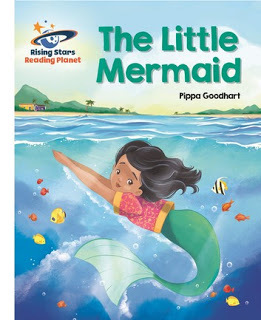
Which other classic stories have we changed to suit our modern sensibilities when rewriting those stories for very young children? No modern picture book version of the Cinderella story includes her sisters having their eyes pecked out by doves as happens in the Grimm brothers’ version of it. You won’t find picture books of the story of Noah’s Flood that include the people and animals drowning as God saves just those in the Ark.
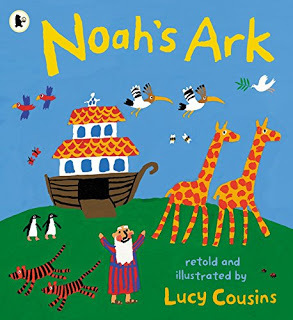
And yet we don’t always shy away from real horror of kinds much closer to home for young children. Think of award-winning powerful simple picture book ‘The Journey’ by Francesca Sanna.
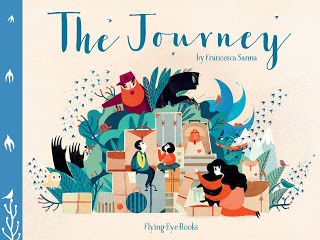

In that book we see the father going out into danger and not coming back. We see the mother in tears as she hurries with her children in search of safety. That safety isn’t sure for them even by the end of the book. It’s a book that is emotionally honest about war and killing and homelessness; what it is to be a refugee. But we don’t see the perpetrators of that death and destruction. Is the dividing line between what can, and can’t, be depicted in stories for young children the line between showing the violence and showing the aftermath of that violence? Should we judge differently between ‘real’ and clearly fictional horror in stories when deciding which horrors should, and shouldn’t, be included? Discuss….!
Published on May 05, 2019 16:30
April 28, 2019
Picture Books and the Five Ways to Wellbeing • Lynne Garner
If you've read any of my previous posts you'll be aware that I also teach for a living. I'm lucky that my job is slightly different to most teaching roles. I teach almost any age from four year olds to someone in the 80s or even 90s. I teach almost where from a school dining room to a church hall to a craft room in a garden centre. Part of my job entails encouraging my students to look after their wellbeing. To achieve this we use the five ways to wellbeing. These five ways are:
ConnectingBeing activeTaking noticeKeep learning Giving
Now I've talked about how picture books can be used as an educational tool in my posts Picture Books Aren't Just for Reading and Take a Picture Book and Add a Story Sack. However, in this post I've decided to explore how to use picture books to highlight the five ways of wellbeing.
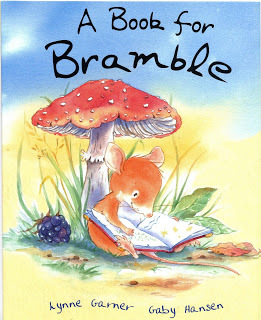 Firstly, I'll use one of my books.
Firstly, I'll use one of my books.
A Book For Bramble
Teasel the mouse has a best friend, Bramble the hedgehog. Bramble has gone into hibernation and Teasel is missing his friend very much. So he decides to create him a gift (giving) and writes him a book. In the book Teasel writes about all the fun things he does (being active), about the things that happen during winter (taking notice) and lastly when Bramble emerges from his long hibernation Teasel is waiting for him (re-connecting).
The next book I'd like to suggest to use to explore the five ways to wellbeing is written by one of the Picture Book Den team, Chitra Soundar.
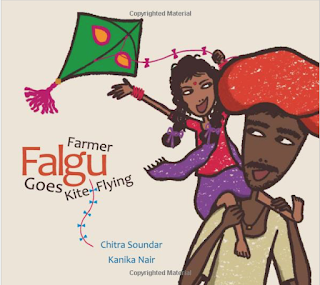 Farmer Falgu Goes Kite Flying
Farmer Falgu Goes Kite Flying
It's the perfect day for flying a kite so Farmer Falgu and his daughter Ella load the cart with kites and they head to the fair grounds. On their way they meet Ahmed (the balloon man) and Pushpa (the fortune teller) who Farmer Falgu gives a lift to (connecting and giving). As they travel the kites and balloons are whisked away by a strong gust of wind. Some of the kites are blown high into the sky whilst others crash land. Farmer Falgu uses his skills (giving) to create a kite everyone is proud of.
The next book I'd like to share is by another of the Picture Book Den team Pippa Goodhart.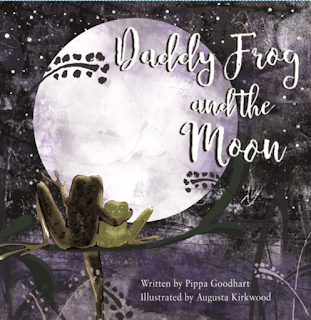
Daddy Frog and the Moon Publication date 31st May 2019
Daddy Frog is so in love with his tadpole (Baby Frog) that he decides to get her a gift (giving), which will show her how much he loves her. So, ignoring her plea to teach her to swim (missing the opportunity to connect) in goes in search of the perfect gift. Daddy Frog misses teaching Baby Frog important froggy things such as wriggle and swimming. But finally shows her how to leap and also discovers just by being there and doing things together he can show her how much he loves her (re-connecting).
Looking at connecting from another perspective can be achieved by sharing a book written by yet another 'denner,' Jane Clarke.
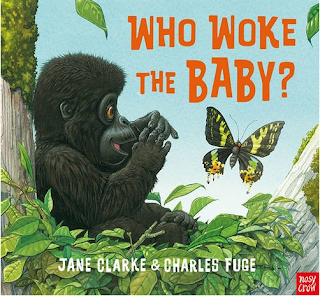 Who Woke the Baby
Although this book doesn't look at connecting in the way I've highlighted in the other books it is about connections and how we all connect to one another. How an act we do can affect not just the person/animal next to us but others who are nowhere near us. A lesson that is extremely important and links to one of the biggest issues of today, global warming and the degradation of the environment.
Who Woke the Baby
Although this book doesn't look at connecting in the way I've highlighted in the other books it is about connections and how we all connect to one another. How an act we do can affect not just the person/animal next to us but others who are nowhere near us. A lesson that is extremely important and links to one of the biggest issues of today, global warming and the degradation of the environment.
Lastly I want to include these four books written by ex-denner, Moira Butterfield.
Everybody feels... Angry! Everybody feels... Scared! Everybody feel... Happy!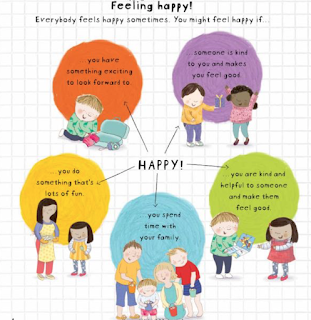 Everybody feels... Sad!
Everybody feels... Sad!
These books as a set would cover all of the five ways to wellbeing. For example just this single page from 'Everybody feels... Happy! could be used to talk about:Connecting: spending time with familyGiving: being kind or helpful Taking notice: being aware everyone has feelings and we can have an impact on another person, both positive and negativeKeep learning: perhaps learning a new skill e.g. cookingGiving: Not only makes the person receiving the gift feel good but also it provides the giver a lift too So next time you read a picture book or discover a new one think about the five ways to wellbeing and 'notice' how what you can pull out and 'give the gift' of 'learning' to the child or children in your life.
Finally if you have any books you feel would lend themselves to teaching the five ways to wellbeing please share them below in the comments.
Lynne
Click here to visit my websiteClick here for my short story collections
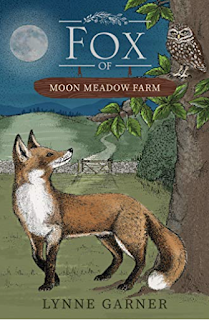 My latest short story collection
My latest short story collection
ConnectingBeing activeTaking noticeKeep learning Giving
Now I've talked about how picture books can be used as an educational tool in my posts Picture Books Aren't Just for Reading and Take a Picture Book and Add a Story Sack. However, in this post I've decided to explore how to use picture books to highlight the five ways of wellbeing.
 Firstly, I'll use one of my books.
Firstly, I'll use one of my books. A Book For Bramble
Teasel the mouse has a best friend, Bramble the hedgehog. Bramble has gone into hibernation and Teasel is missing his friend very much. So he decides to create him a gift (giving) and writes him a book. In the book Teasel writes about all the fun things he does (being active), about the things that happen during winter (taking notice) and lastly when Bramble emerges from his long hibernation Teasel is waiting for him (re-connecting).
The next book I'd like to suggest to use to explore the five ways to wellbeing is written by one of the Picture Book Den team, Chitra Soundar.
 Farmer Falgu Goes Kite Flying
Farmer Falgu Goes Kite Flying
It's the perfect day for flying a kite so Farmer Falgu and his daughter Ella load the cart with kites and they head to the fair grounds. On their way they meet Ahmed (the balloon man) and Pushpa (the fortune teller) who Farmer Falgu gives a lift to (connecting and giving). As they travel the kites and balloons are whisked away by a strong gust of wind. Some of the kites are blown high into the sky whilst others crash land. Farmer Falgu uses his skills (giving) to create a kite everyone is proud of.
The next book I'd like to share is by another of the Picture Book Den team Pippa Goodhart.

Daddy Frog and the Moon Publication date 31st May 2019
Daddy Frog is so in love with his tadpole (Baby Frog) that he decides to get her a gift (giving), which will show her how much he loves her. So, ignoring her plea to teach her to swim (missing the opportunity to connect) in goes in search of the perfect gift. Daddy Frog misses teaching Baby Frog important froggy things such as wriggle and swimming. But finally shows her how to leap and also discovers just by being there and doing things together he can show her how much he loves her (re-connecting).
Looking at connecting from another perspective can be achieved by sharing a book written by yet another 'denner,' Jane Clarke.
 Who Woke the Baby
Although this book doesn't look at connecting in the way I've highlighted in the other books it is about connections and how we all connect to one another. How an act we do can affect not just the person/animal next to us but others who are nowhere near us. A lesson that is extremely important and links to one of the biggest issues of today, global warming and the degradation of the environment.
Who Woke the Baby
Although this book doesn't look at connecting in the way I've highlighted in the other books it is about connections and how we all connect to one another. How an act we do can affect not just the person/animal next to us but others who are nowhere near us. A lesson that is extremely important and links to one of the biggest issues of today, global warming and the degradation of the environment. Lastly I want to include these four books written by ex-denner, Moira Butterfield.
Everybody feels... Angry! Everybody feels... Scared! Everybody feel... Happy!
 Everybody feels... Sad!
Everybody feels... Sad!
These books as a set would cover all of the five ways to wellbeing. For example just this single page from 'Everybody feels... Happy! could be used to talk about:Connecting: spending time with familyGiving: being kind or helpful Taking notice: being aware everyone has feelings and we can have an impact on another person, both positive and negativeKeep learning: perhaps learning a new skill e.g. cookingGiving: Not only makes the person receiving the gift feel good but also it provides the giver a lift too So next time you read a picture book or discover a new one think about the five ways to wellbeing and 'notice' how what you can pull out and 'give the gift' of 'learning' to the child or children in your life.
Finally if you have any books you feel would lend themselves to teaching the five ways to wellbeing please share them below in the comments.
Lynne
Click here to visit my websiteClick here for my short story collections
 My latest short story collection
My latest short story collection
Published on April 28, 2019 21:00
April 22, 2019
Dioramas and 3D illustration in children’s picture books, by Paeony Lewis
For centuries, dolls’ houses have encouraged children’s imaginations and story telling. Toy farmyards, zoos, soldiers and train sets, even Playmobil and Lego, can also be used to create miniature imaginative worlds. Children’s television was once full of 3D models: Thomas the Tank, Fireman Sam, Clangers, etc. So I am surprised there aren’t more children’s fiction picture books that use dioramas and 3D illustration, and I thought I’d investigate.
 From a dolls’ house exhibition (my own dolls’ house was nothing like this!).Traditional illustrations create imaginary worlds, but there is something about a miniature 3D scene that draws me in and makes me smile. I am sure I’m not alone (am I?) and I wonder if some children could relate better to a photographic 3D image as it’s so similar to what they see on screens. Or is there a hidden reluctance amongst adults and publishers towards books that look more like television, unless they are already a television series? Alternatively, perhaps most 3D artists/illustrators already work with moving images for the screen, rather than books?
From a dolls’ house exhibition (my own dolls’ house was nothing like this!).Traditional illustrations create imaginary worlds, but there is something about a miniature 3D scene that draws me in and makes me smile. I am sure I’m not alone (am I?) and I wonder if some children could relate better to a photographic 3D image as it’s so similar to what they see on screens. Or is there a hidden reluctance amongst adults and publishers towards books that look more like television, unless they are already a television series? Alternatively, perhaps most 3D artists/illustrators already work with moving images for the screen, rather than books?
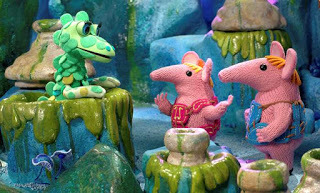 The television world of the ClangersAnother explanation for the scarcity of 3D models and dioramas in picture books might be that they are very time consuming to create and require photography and model making or papercraft skills, in addition to illustration. For example, Antje Damm, who has created several lovely diorama picture books, commented online: “I am not a very good photographer, and this was my main problem while creating this book.” Whilst Lauren Child used a professional photographer, Polly Borland, for her two delightful 3D diorama books, and the first, The Princess and the Pea, took almost two years to complete, compared to the usual three-six months for her picture books. When it came to her second 3D book, Goldilocks and the Three Bears, this time a set designer was also used, Emily Jenkins. Lauren Child comments on her website: “As much as I enjoyed designing and building sets and styling scenes, I must say I was relieved that this time it wasn’t my job.”
The television world of the ClangersAnother explanation for the scarcity of 3D models and dioramas in picture books might be that they are very time consuming to create and require photography and model making or papercraft skills, in addition to illustration. For example, Antje Damm, who has created several lovely diorama picture books, commented online: “I am not a very good photographer, and this was my main problem while creating this book.” Whilst Lauren Child used a professional photographer, Polly Borland, for her two delightful 3D diorama books, and the first, The Princess and the Pea, took almost two years to complete, compared to the usual three-six months for her picture books. When it came to her second 3D book, Goldilocks and the Three Bears, this time a set designer was also used, Emily Jenkins. Lauren Child comments on her website: “As much as I enjoyed designing and building sets and styling scenes, I must say I was relieved that this time it wasn’t my job.”
Whatever the reason for the scarcity of fiction picture books that use 3D dioramas, I thought I'd share some delightful examples. I'll begin with an appealing American one I’ve only just discovered, that is aimed at younger children: Hank Finds An Egg by Rebecca Dudley (with a name like Hank, I doubt I needed to mention it’s American!).
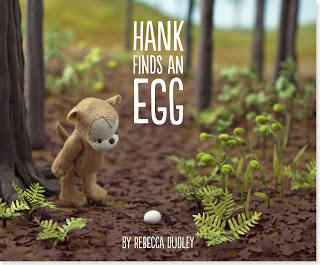 Hank Finds an Egg by Rebecca Dudley (Peter Pauper Press Inc, USA, 2013)This was Rebecca's first picture book and as an architect she was familiar with working in 3D. It's wordless and the theme of kindness and perseverance shines through the simple-to-follow visual story about a monkey who tries to return an egg to a nest. Rebecca also trained in graphic design, and the uncluttered layout and quiet natural colour palette add to the book. There are many more images on Rebecca's blog.
Hank Finds an Egg by Rebecca Dudley (Peter Pauper Press Inc, USA, 2013)This was Rebecca's first picture book and as an architect she was familiar with working in 3D. It's wordless and the theme of kindness and perseverance shines through the simple-to-follow visual story about a monkey who tries to return an egg to a nest. Rebecca also trained in graphic design, and the uncluttered layout and quiet natural colour palette add to the book. There are many more images on Rebecca's blog.
 From Hank Finds An Egg Everything is handmade, including all those leaves, and then photographed. The same US publisher, Peter Pauper Press Inc, is behind a further 3D book, this time creating 3D paper-cut dioramas. Published in March 2019, I haven't yet seen Little Things by Nick Dyer, illustrated by Kelly Pousette. Years ago, the illustrator was given a book on paper cut and says she became fascinated by the process. She is particularly interested in the shadows and lighting that are possible from photographing the scenes.
From Hank Finds An Egg Everything is handmade, including all those leaves, and then photographed. The same US publisher, Peter Pauper Press Inc, is behind a further 3D book, this time creating 3D paper-cut dioramas. Published in March 2019, I haven't yet seen Little Things by Nick Dyer, illustrated by Kelly Pousette. Years ago, the illustrator was given a book on paper cut and says she became fascinated by the process. She is particularly interested in the shadows and lighting that are possible from photographing the scenes.
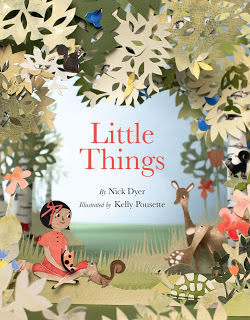
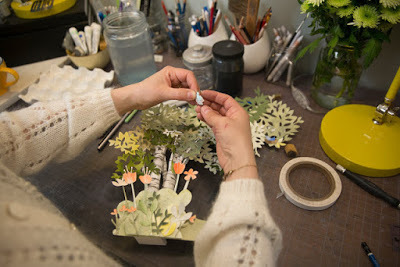 Kelly Pousette in her studio (from Letstalkbooks blog post)
Kelly Pousette in her studio (from Letstalkbooks blog post)
The next American 3D book is another I haven't seen, Viva Frida by Mexican-born illustrator Yuyi Morales. There are few words, though perhaps this should be classified loosely as non-fiction as it is about the creativity of artist, Frida Kahlo. This vibrant award-winning book appears to be Yuyi Morales' only book that uses 3D models, as her other books are traditionally illustrated. In this video she talks about how time consuming it was to create a book from models and scenes. Interestingly, like Lauren Child, Yuyi Morales used a photographer for her 3D scenes (Peter O'Shea).
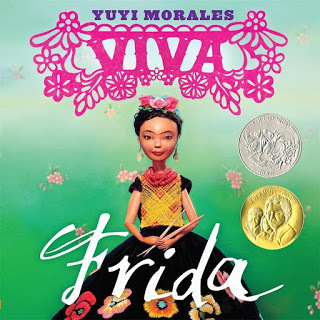 Viva Frida by Yuyi Morales (Roaring Book Press, USA, 2014)
Viva Frida by Yuyi Morales (Roaring Book Press, USA, 2014)
 Inside Viva Frida by Yuyi Morales
Inside Viva Frida by Yuyi Morales
Moving across the ocean to the UK, as mentioned earlier, Children's Laureate, Lauren Child, is behind two gorgeous 3D picture books. In the first, The Princess and the Pea, Lauren Child both wrote and created the scenes, ready to be photographed professionally by Polly Borland. The figures are painted 2D cut-outs and the backdrops are 3D dolls' house furniture or specially commissioned items. Many of the panelled rooms started life as cornflake packets. Not everything is to scale, as happens in a real doll's house, and Lauren Child feels this creates a stranger, more childlike world. In the book, she writes: "I love the paintings of Vermeer, his detail and the way he allows you a glimpse into someone else's world." This, and her passion for dolls' houses and use of collage in her books, must all inspire the dioramas in Lauren's quirky retelling of The Princess and the Pea.
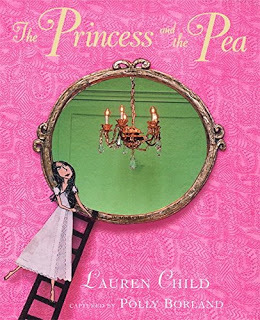 The Princess and the Pea by Lauren Child,
The Princess and the Pea by Lauren Child,
photographs by Polly Borland (Puffin 2006)
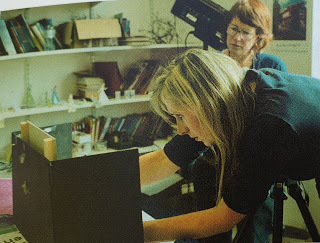 Creating a scene, from The Princess and the Pea
Creating a scene, from The Princess and the Pea
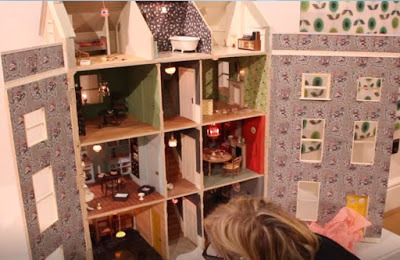 Lauren Child's personal doll's house, that took thirty years to create. More here.
Lauren Child's personal doll's house, that took thirty years to create. More here.
 From inside The Princess and the Pea
From inside The Princess and the Pea
When Lauren Child and Polly Borland partnered again on their second 3D book, Goldilocks and the Three Bears, they decided to use dolls and teddy bears because Polly Borland's favourite book as a child was the American photographic picture book, The Lonely Doll by Dare Wright. Since it's publication in 1957, it has caused controversy because of the bear's worrying penchant for smacking, but it remains an iconic book and he published many others using the same realistic photographic 3D techniques.
 From The Lonely Doll by Dare Wright (Houghton Mifflin 1998 reprint of 1957 original)
From The Lonely Doll by Dare Wright (Houghton Mifflin 1998 reprint of 1957 original)
Again, Lauren Child twisted the story of Goldilocks and the Three Bears, but this time she didn't personally produce the time-consuming hand-built sets, and instead passed this to Emily Jenkins. Polly Borland remained the photographer. The three bears and Goldilocks were created by doll-maker, John Wright, and Goldilocks stands 30cm tall. Personally, I adore studying the fantastical, intricate photographic 3D illustrations.
 From inside Goldilocks and the Three Bears by Lauren Child and many others (Puffin, 2008)
From inside Goldilocks and the Three Bears by Lauren Child and many others (Puffin, 2008)
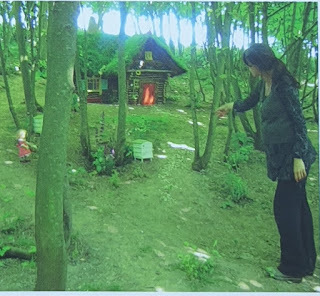 This photograph from the making of the book gives a sense of scale.
This photograph from the making of the book gives a sense of scale.
In reality the trees are young.Another illustrator I really enjoy who produces dioramas is the German illustrator, Antje Damm. I've even bought one of her books that hasn't been translated into English, which is slightly daft as I don't read German - here it is (can anyone translate the title for me?!). Looking through a book when you can't read the language reminded me what it must be like to be a child faced with a mass of alien words, trying to create a story from just the images.
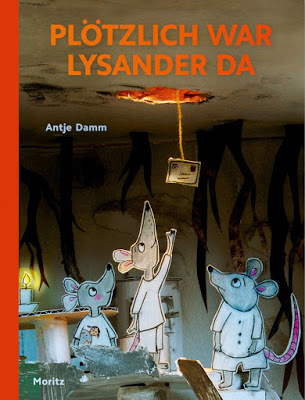
Like Rebecca Dudley, Antje Damm also studied architecture and therefore was proficient at visualising in 3D and making models. I first bought Antje Damm's Waiting for Goliath because of the interesting illustrations that were a mixture of stand-up 2D and 3D paper/card models, and the strong colour scheme. It looked different to the other books on the shop shelves.
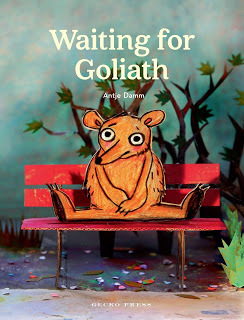 Waiting for Goliath by Antje Damm (Gecko Press, 2017)
Waiting for Goliath by Antje Damm (Gecko Press, 2017)
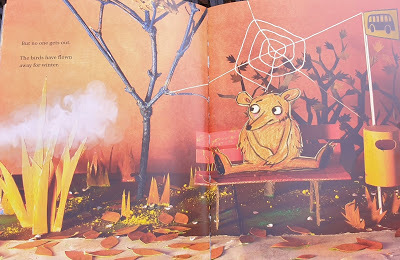 From inside Waiting for Goliath
From inside Waiting for Goliath
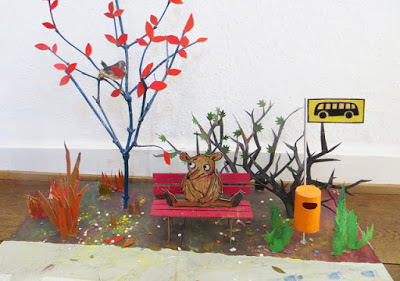 With a few changes, the model above was used to create the image in the book.
With a few changes, the model above was used to create the image in the book.
It's interesting what can be done with lighting and photography.
For more info see this blog.The Visitor (Gecko Press, 2018) is probably Antje Damm's most well-known book in the UK. Here, all the story takes place in one ground-floor room and it is about loneliness and overcoming fears. Again, the book is in her distinctive 3D style and Antje uses variations in colour and lighting to show the development of the story. For the last scene she took the model outside because Antje wanted the warm light of the sun and enjoys experimenting.
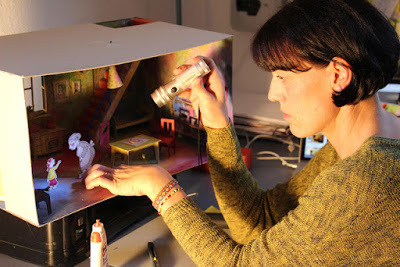 Antje Damm experimenting with lighting the diorama.
Antje Damm experimenting with lighting the diorama.
 From inside The Visitor by Antje Damm (Gecko Press, 2018)
From inside The Visitor by Antje Damm (Gecko Press, 2018)
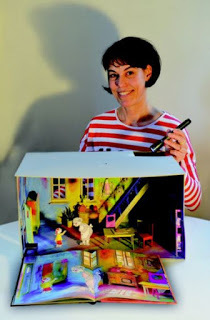 A torch provides different lighting effectsVariations in lighting played a major role for another illustrator, Elly MacKay, when she created the diorama images for Maya. Canadian illustrator, Elly Mackay, worked with Indian-born author, Mahak Jain, to create a book that combines reality with the fantastical and a dreamworld. This wasn't Elly's first paper-cut, 3D book, but she said it proved the most challenging. Online, we are told she creates the illustrations by inking YUPO(r) paper and cutting it into layers that are set up like a Victorian paper theatre, and then she plays with lights and filters to create atmosphere and photographs the scenes. There's a video here on the making of the book, including collaboration between the author and illustrator, which isn't often allowed to happen in publishing.
A torch provides different lighting effectsVariations in lighting played a major role for another illustrator, Elly MacKay, when she created the diorama images for Maya. Canadian illustrator, Elly Mackay, worked with Indian-born author, Mahak Jain, to create a book that combines reality with the fantastical and a dreamworld. This wasn't Elly's first paper-cut, 3D book, but she said it proved the most challenging. Online, we are told she creates the illustrations by inking YUPO(r) paper and cutting it into layers that are set up like a Victorian paper theatre, and then she plays with lights and filters to create atmosphere and photographs the scenes. There's a video here on the making of the book, including collaboration between the author and illustrator, which isn't often allowed to happen in publishing.
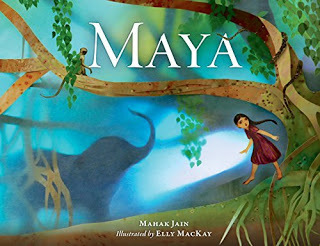 Maya by Mahak Jain and illustrated by Elly MacKay (Owlkids Books, 2016)
Maya by Mahak Jain and illustrated by Elly MacKay (Owlkids Books, 2016)
 Elly MacKay creating Maya
Elly MacKay creating Maya


The images above from the pages of Maya show how Elly MacKay utilised lighting and different techniques. She says the dreamworld uses only black and white, with shadows and fluid, dreamy lines and otherworldly lighting. The real world is crisper, rigid and clearly three-dimensional.
There's more on the creation of Elly's award-winning 3D paper cut diorama books at her website. The image below is from her 2018 book Red Sky at Night, and shows the photography of a scene within one of her 'theatres'.
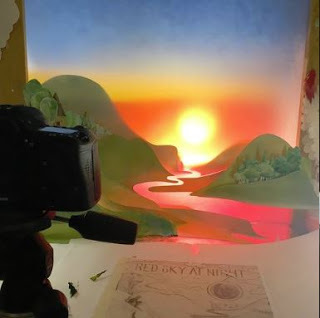
As I've been putting this blog post together, apart from appreciating how staggeringly time consuming the books are to create, I've come to realise how integral photography and lighting are to the images. Some illustrators use professional photographers, and others learn as they develop their skills. All the illustrators here say they use minimal post-production digital computer manipulation, if at all, and Rebecca Dudley says it might only be to remove a pin holding up a model.
Lauren Child deliberately mixes the sizes of objects, as you'd find in a doll's house, and not reality. I enjoy this as, for example in the delightfully quirky The Princess and the Pea, the juxtaposition of 2D paper figures and 3D miniature objects makes it clear this is an imaginary world. From a positive point of view, Antje Damm's dioramas are also clearly not real, which I like. For me, sterile perfection and seamless minaturisation would detract from the make believe of the storybook world because it leaves less psychological space for the reader's own imagination. Thus perversely, intricate perfection would be more unreal (maybe others disagree?).
Part of the charm of dioramas, whether paper-cut or models, is to feel you are stepping inside a world/theatre of the imagination, not reality. It's like discovering a fairy door on a tree in a wood. You know it's not real but your imagination takes you on a journey of joyous make believe. Now I want to create a 3D story about one of those doors, and where it leads!
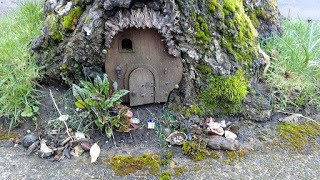
Paeony Lewis
Please click for more of my blog posts at the Picture Book Den
 From a dolls’ house exhibition (my own dolls’ house was nothing like this!).Traditional illustrations create imaginary worlds, but there is something about a miniature 3D scene that draws me in and makes me smile. I am sure I’m not alone (am I?) and I wonder if some children could relate better to a photographic 3D image as it’s so similar to what they see on screens. Or is there a hidden reluctance amongst adults and publishers towards books that look more like television, unless they are already a television series? Alternatively, perhaps most 3D artists/illustrators already work with moving images for the screen, rather than books?
From a dolls’ house exhibition (my own dolls’ house was nothing like this!).Traditional illustrations create imaginary worlds, but there is something about a miniature 3D scene that draws me in and makes me smile. I am sure I’m not alone (am I?) and I wonder if some children could relate better to a photographic 3D image as it’s so similar to what they see on screens. Or is there a hidden reluctance amongst adults and publishers towards books that look more like television, unless they are already a television series? Alternatively, perhaps most 3D artists/illustrators already work with moving images for the screen, rather than books?  The television world of the ClangersAnother explanation for the scarcity of 3D models and dioramas in picture books might be that they are very time consuming to create and require photography and model making or papercraft skills, in addition to illustration. For example, Antje Damm, who has created several lovely diorama picture books, commented online: “I am not a very good photographer, and this was my main problem while creating this book.” Whilst Lauren Child used a professional photographer, Polly Borland, for her two delightful 3D diorama books, and the first, The Princess and the Pea, took almost two years to complete, compared to the usual three-six months for her picture books. When it came to her second 3D book, Goldilocks and the Three Bears, this time a set designer was also used, Emily Jenkins. Lauren Child comments on her website: “As much as I enjoyed designing and building sets and styling scenes, I must say I was relieved that this time it wasn’t my job.”
The television world of the ClangersAnother explanation for the scarcity of 3D models and dioramas in picture books might be that they are very time consuming to create and require photography and model making or papercraft skills, in addition to illustration. For example, Antje Damm, who has created several lovely diorama picture books, commented online: “I am not a very good photographer, and this was my main problem while creating this book.” Whilst Lauren Child used a professional photographer, Polly Borland, for her two delightful 3D diorama books, and the first, The Princess and the Pea, took almost two years to complete, compared to the usual three-six months for her picture books. When it came to her second 3D book, Goldilocks and the Three Bears, this time a set designer was also used, Emily Jenkins. Lauren Child comments on her website: “As much as I enjoyed designing and building sets and styling scenes, I must say I was relieved that this time it wasn’t my job.” Whatever the reason for the scarcity of fiction picture books that use 3D dioramas, I thought I'd share some delightful examples. I'll begin with an appealing American one I’ve only just discovered, that is aimed at younger children: Hank Finds An Egg by Rebecca Dudley (with a name like Hank, I doubt I needed to mention it’s American!).
 Hank Finds an Egg by Rebecca Dudley (Peter Pauper Press Inc, USA, 2013)This was Rebecca's first picture book and as an architect she was familiar with working in 3D. It's wordless and the theme of kindness and perseverance shines through the simple-to-follow visual story about a monkey who tries to return an egg to a nest. Rebecca also trained in graphic design, and the uncluttered layout and quiet natural colour palette add to the book. There are many more images on Rebecca's blog.
Hank Finds an Egg by Rebecca Dudley (Peter Pauper Press Inc, USA, 2013)This was Rebecca's first picture book and as an architect she was familiar with working in 3D. It's wordless and the theme of kindness and perseverance shines through the simple-to-follow visual story about a monkey who tries to return an egg to a nest. Rebecca also trained in graphic design, and the uncluttered layout and quiet natural colour palette add to the book. There are many more images on Rebecca's blog. From Hank Finds An Egg Everything is handmade, including all those leaves, and then photographed. The same US publisher, Peter Pauper Press Inc, is behind a further 3D book, this time creating 3D paper-cut dioramas. Published in March 2019, I haven't yet seen Little Things by Nick Dyer, illustrated by Kelly Pousette. Years ago, the illustrator was given a book on paper cut and says she became fascinated by the process. She is particularly interested in the shadows and lighting that are possible from photographing the scenes.
From Hank Finds An Egg Everything is handmade, including all those leaves, and then photographed. The same US publisher, Peter Pauper Press Inc, is behind a further 3D book, this time creating 3D paper-cut dioramas. Published in March 2019, I haven't yet seen Little Things by Nick Dyer, illustrated by Kelly Pousette. Years ago, the illustrator was given a book on paper cut and says she became fascinated by the process. She is particularly interested in the shadows and lighting that are possible from photographing the scenes. 
 Kelly Pousette in her studio (from Letstalkbooks blog post)
Kelly Pousette in her studio (from Letstalkbooks blog post)The next American 3D book is another I haven't seen, Viva Frida by Mexican-born illustrator Yuyi Morales. There are few words, though perhaps this should be classified loosely as non-fiction as it is about the creativity of artist, Frida Kahlo. This vibrant award-winning book appears to be Yuyi Morales' only book that uses 3D models, as her other books are traditionally illustrated. In this video she talks about how time consuming it was to create a book from models and scenes. Interestingly, like Lauren Child, Yuyi Morales used a photographer for her 3D scenes (Peter O'Shea).
 Viva Frida by Yuyi Morales (Roaring Book Press, USA, 2014)
Viva Frida by Yuyi Morales (Roaring Book Press, USA, 2014)
 Inside Viva Frida by Yuyi Morales
Inside Viva Frida by Yuyi MoralesMoving across the ocean to the UK, as mentioned earlier, Children's Laureate, Lauren Child, is behind two gorgeous 3D picture books. In the first, The Princess and the Pea, Lauren Child both wrote and created the scenes, ready to be photographed professionally by Polly Borland. The figures are painted 2D cut-outs and the backdrops are 3D dolls' house furniture or specially commissioned items. Many of the panelled rooms started life as cornflake packets. Not everything is to scale, as happens in a real doll's house, and Lauren Child feels this creates a stranger, more childlike world. In the book, she writes: "I love the paintings of Vermeer, his detail and the way he allows you a glimpse into someone else's world." This, and her passion for dolls' houses and use of collage in her books, must all inspire the dioramas in Lauren's quirky retelling of The Princess and the Pea.
 The Princess and the Pea by Lauren Child,
The Princess and the Pea by Lauren Child, photographs by Polly Borland (Puffin 2006)
 Creating a scene, from The Princess and the Pea
Creating a scene, from The Princess and the Pea Lauren Child's personal doll's house, that took thirty years to create. More here.
Lauren Child's personal doll's house, that took thirty years to create. More here. From inside The Princess and the Pea
From inside The Princess and the PeaWhen Lauren Child and Polly Borland partnered again on their second 3D book, Goldilocks and the Three Bears, they decided to use dolls and teddy bears because Polly Borland's favourite book as a child was the American photographic picture book, The Lonely Doll by Dare Wright. Since it's publication in 1957, it has caused controversy because of the bear's worrying penchant for smacking, but it remains an iconic book and he published many others using the same realistic photographic 3D techniques.
 From The Lonely Doll by Dare Wright (Houghton Mifflin 1998 reprint of 1957 original)
From The Lonely Doll by Dare Wright (Houghton Mifflin 1998 reprint of 1957 original)Again, Lauren Child twisted the story of Goldilocks and the Three Bears, but this time she didn't personally produce the time-consuming hand-built sets, and instead passed this to Emily Jenkins. Polly Borland remained the photographer. The three bears and Goldilocks were created by doll-maker, John Wright, and Goldilocks stands 30cm tall. Personally, I adore studying the fantastical, intricate photographic 3D illustrations.
 From inside Goldilocks and the Three Bears by Lauren Child and many others (Puffin, 2008)
From inside Goldilocks and the Three Bears by Lauren Child and many others (Puffin, 2008)
 This photograph from the making of the book gives a sense of scale.
This photograph from the making of the book gives a sense of scale. In reality the trees are young.Another illustrator I really enjoy who produces dioramas is the German illustrator, Antje Damm. I've even bought one of her books that hasn't been translated into English, which is slightly daft as I don't read German - here it is (can anyone translate the title for me?!). Looking through a book when you can't read the language reminded me what it must be like to be a child faced with a mass of alien words, trying to create a story from just the images.

Like Rebecca Dudley, Antje Damm also studied architecture and therefore was proficient at visualising in 3D and making models. I first bought Antje Damm's Waiting for Goliath because of the interesting illustrations that were a mixture of stand-up 2D and 3D paper/card models, and the strong colour scheme. It looked different to the other books on the shop shelves.
 Waiting for Goliath by Antje Damm (Gecko Press, 2017)
Waiting for Goliath by Antje Damm (Gecko Press, 2017) From inside Waiting for Goliath
From inside Waiting for Goliath  With a few changes, the model above was used to create the image in the book.
With a few changes, the model above was used to create the image in the book. It's interesting what can be done with lighting and photography.
For more info see this blog.The Visitor (Gecko Press, 2018) is probably Antje Damm's most well-known book in the UK. Here, all the story takes place in one ground-floor room and it is about loneliness and overcoming fears. Again, the book is in her distinctive 3D style and Antje uses variations in colour and lighting to show the development of the story. For the last scene she took the model outside because Antje wanted the warm light of the sun and enjoys experimenting.
 Antje Damm experimenting with lighting the diorama.
Antje Damm experimenting with lighting the diorama.
 From inside The Visitor by Antje Damm (Gecko Press, 2018)
From inside The Visitor by Antje Damm (Gecko Press, 2018)
 A torch provides different lighting effectsVariations in lighting played a major role for another illustrator, Elly MacKay, when she created the diorama images for Maya. Canadian illustrator, Elly Mackay, worked with Indian-born author, Mahak Jain, to create a book that combines reality with the fantastical and a dreamworld. This wasn't Elly's first paper-cut, 3D book, but she said it proved the most challenging. Online, we are told she creates the illustrations by inking YUPO(r) paper and cutting it into layers that are set up like a Victorian paper theatre, and then she plays with lights and filters to create atmosphere and photographs the scenes. There's a video here on the making of the book, including collaboration between the author and illustrator, which isn't often allowed to happen in publishing.
A torch provides different lighting effectsVariations in lighting played a major role for another illustrator, Elly MacKay, when she created the diorama images for Maya. Canadian illustrator, Elly Mackay, worked with Indian-born author, Mahak Jain, to create a book that combines reality with the fantastical and a dreamworld. This wasn't Elly's first paper-cut, 3D book, but she said it proved the most challenging. Online, we are told she creates the illustrations by inking YUPO(r) paper and cutting it into layers that are set up like a Victorian paper theatre, and then she plays with lights and filters to create atmosphere and photographs the scenes. There's a video here on the making of the book, including collaboration between the author and illustrator, which isn't often allowed to happen in publishing. Maya by Mahak Jain and illustrated by Elly MacKay (Owlkids Books, 2016)
Maya by Mahak Jain and illustrated by Elly MacKay (Owlkids Books, 2016) Elly MacKay creating Maya
Elly MacKay creating Maya

The images above from the pages of Maya show how Elly MacKay utilised lighting and different techniques. She says the dreamworld uses only black and white, with shadows and fluid, dreamy lines and otherworldly lighting. The real world is crisper, rigid and clearly three-dimensional.
There's more on the creation of Elly's award-winning 3D paper cut diorama books at her website. The image below is from her 2018 book Red Sky at Night, and shows the photography of a scene within one of her 'theatres'.

As I've been putting this blog post together, apart from appreciating how staggeringly time consuming the books are to create, I've come to realise how integral photography and lighting are to the images. Some illustrators use professional photographers, and others learn as they develop their skills. All the illustrators here say they use minimal post-production digital computer manipulation, if at all, and Rebecca Dudley says it might only be to remove a pin holding up a model.
Lauren Child deliberately mixes the sizes of objects, as you'd find in a doll's house, and not reality. I enjoy this as, for example in the delightfully quirky The Princess and the Pea, the juxtaposition of 2D paper figures and 3D miniature objects makes it clear this is an imaginary world. From a positive point of view, Antje Damm's dioramas are also clearly not real, which I like. For me, sterile perfection and seamless minaturisation would detract from the make believe of the storybook world because it leaves less psychological space for the reader's own imagination. Thus perversely, intricate perfection would be more unreal (maybe others disagree?).
Part of the charm of dioramas, whether paper-cut or models, is to feel you are stepping inside a world/theatre of the imagination, not reality. It's like discovering a fairy door on a tree in a wood. You know it's not real but your imagination takes you on a journey of joyous make believe. Now I want to create a 3D story about one of those doors, and where it leads!

Paeony Lewis
Please click for more of my blog posts at the Picture Book Den
Published on April 22, 2019 10:35
April 14, 2019
Getting Crafty, by Jane Clarke
Here are a few tried and tested examples of simple, not too messy, activities that might inspire you to create a craft to go with a picture book - one you’ve written or illustrated - or to go with a favourite book you read over and over again to your little one. Have fun!
Butterfly You'll need to pre-cut coffee filters into the shape of a butterfly.
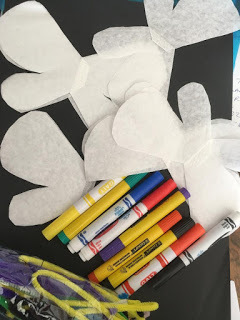
Provide enough washable felt pens for children to share and one pipe cleaner for every butterfly.Encourage the children to use lots of colour - vaguely symmetrically.
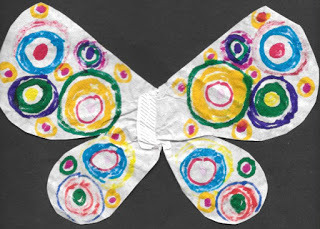
Fold the pipe cleaner in half and twist onto the wings.If you’re somewhere where you can do this (better not to attempt in a library), hold the coffee filter butterfly by it's pipe cleaner antennae and squirt with a light mist of water or dip for a moment in a shallow saucer of water. The colours will run together. Spread out on a kitchen towel to dry.
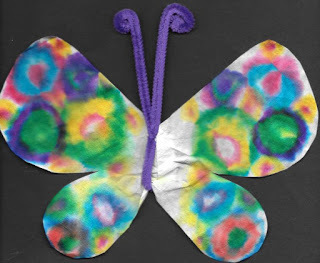 Inspired by Who woke the Baby, by Jane Clarke, illustrated by Charles Fuge CD CreatureA local charity shop lets me have their unsaleable CDs/DVDs (make sure the contents are not unsuitable for kids). As well as CDs, you’ll need:Pre-cut ears/nose/paws/trunks/ tails/ monster/alien features (whatever relates to the picture book you’re reading) in card.large googly eyes and glue sticksPermanent black markers for facial features (only use under adult supervision! A washable pen won’t make a mark on a CD)
Inspired by Who woke the Baby, by Jane Clarke, illustrated by Charles Fuge CD CreatureA local charity shop lets me have their unsaleable CDs/DVDs (make sure the contents are not unsuitable for kids). As well as CDs, you’ll need:Pre-cut ears/nose/paws/trunks/ tails/ monster/alien features (whatever relates to the picture book you’re reading) in card.large googly eyes and glue sticksPermanent black markers for facial features (only use under adult supervision! A washable pen won’t make a mark on a CD)
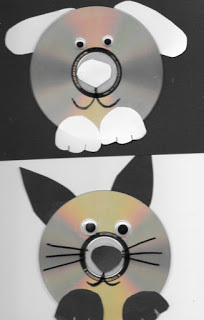 inspired by my friend Ruth who part manages the local Oxfam shop and wanted a use for unsaleable CDs and DVDs. We set up a table at local events and for a small donation to charity, kids can make their own.
inspired by my friend Ruth who part manages the local Oxfam shop and wanted a use for unsaleable CDs and DVDs. We set up a table at local events and for a small donation to charity, kids can make their own.
ChameleonPre-cut card into the shape of a chameleon (this takes a while when you need large numbers!)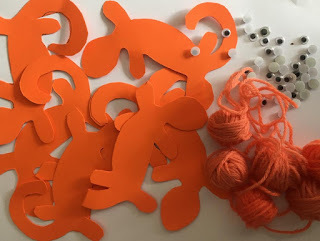
Make a 2 metre length of wool into a small ball of wool for each chameleon.Googly eyes and glue sticksWrap the wool around the chameleon’s body, then stick on the eyes.
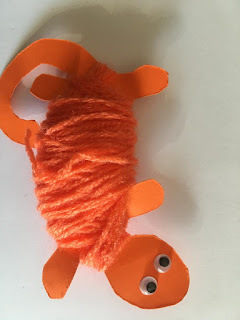
This chameleon is orange because it’s inspired by Neon Leon, by Jane Clarke, illustrated by BrittaTeckentrup
Other pre cut-out crafts I've done includeCupcakes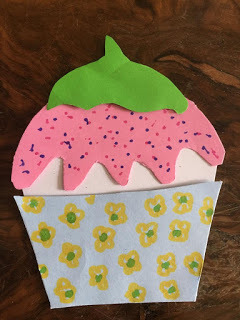 inspired by Sky Private Eye by Jane Clarke illustrated by Loretta Schaferand Bats -great for anything halloween-related but very quick to do, so allow 2 or 3 per child so they can make a family. Google eyes and white pencils are a must, cheap star stickers a fun addition.
inspired by Sky Private Eye by Jane Clarke illustrated by Loretta Schaferand Bats -great for anything halloween-related but very quick to do, so allow 2 or 3 per child so they can make a family. Google eyes and white pencils are a must, cheap star stickers a fun addition.
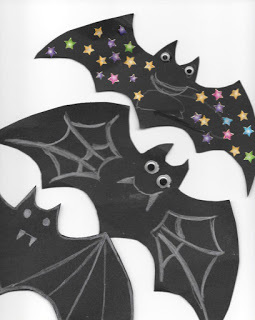
Of course, there are often activity sheets, too. Check out the Picture Book Denner's downloadable sheets - and enjoy getting crafty!
Jane’s latest craft is a green-eyed tree frog inspired by her newest picture book, Leap Frog, illustrated by Britta Teckentrup.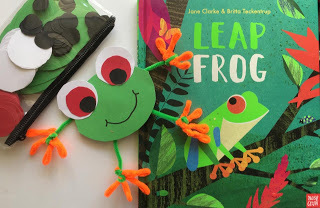
Butterfly You'll need to pre-cut coffee filters into the shape of a butterfly.

Provide enough washable felt pens for children to share and one pipe cleaner for every butterfly.Encourage the children to use lots of colour - vaguely symmetrically.

Fold the pipe cleaner in half and twist onto the wings.If you’re somewhere where you can do this (better not to attempt in a library), hold the coffee filter butterfly by it's pipe cleaner antennae and squirt with a light mist of water or dip for a moment in a shallow saucer of water. The colours will run together. Spread out on a kitchen towel to dry.
 Inspired by Who woke the Baby, by Jane Clarke, illustrated by Charles Fuge CD CreatureA local charity shop lets me have their unsaleable CDs/DVDs (make sure the contents are not unsuitable for kids). As well as CDs, you’ll need:Pre-cut ears/nose/paws/trunks/ tails/ monster/alien features (whatever relates to the picture book you’re reading) in card.large googly eyes and glue sticksPermanent black markers for facial features (only use under adult supervision! A washable pen won’t make a mark on a CD)
Inspired by Who woke the Baby, by Jane Clarke, illustrated by Charles Fuge CD CreatureA local charity shop lets me have their unsaleable CDs/DVDs (make sure the contents are not unsuitable for kids). As well as CDs, you’ll need:Pre-cut ears/nose/paws/trunks/ tails/ monster/alien features (whatever relates to the picture book you’re reading) in card.large googly eyes and glue sticksPermanent black markers for facial features (only use under adult supervision! A washable pen won’t make a mark on a CD) inspired by my friend Ruth who part manages the local Oxfam shop and wanted a use for unsaleable CDs and DVDs. We set up a table at local events and for a small donation to charity, kids can make their own.
inspired by my friend Ruth who part manages the local Oxfam shop and wanted a use for unsaleable CDs and DVDs. We set up a table at local events and for a small donation to charity, kids can make their own.ChameleonPre-cut card into the shape of a chameleon (this takes a while when you need large numbers!)

Make a 2 metre length of wool into a small ball of wool for each chameleon.Googly eyes and glue sticksWrap the wool around the chameleon’s body, then stick on the eyes.

This chameleon is orange because it’s inspired by Neon Leon, by Jane Clarke, illustrated by BrittaTeckentrup
Other pre cut-out crafts I've done includeCupcakes
 inspired by Sky Private Eye by Jane Clarke illustrated by Loretta Schaferand Bats -great for anything halloween-related but very quick to do, so allow 2 or 3 per child so they can make a family. Google eyes and white pencils are a must, cheap star stickers a fun addition.
inspired by Sky Private Eye by Jane Clarke illustrated by Loretta Schaferand Bats -great for anything halloween-related but very quick to do, so allow 2 or 3 per child so they can make a family. Google eyes and white pencils are a must, cheap star stickers a fun addition.
Of course, there are often activity sheets, too. Check out the Picture Book Denner's downloadable sheets - and enjoy getting crafty!
Jane’s latest craft is a green-eyed tree frog inspired by her newest picture book, Leap Frog, illustrated by Britta Teckentrup.

Published on April 14, 2019 22:00
April 7, 2019
Meet the Relatives, by Mini Grey
Today’s post is about all things insect. So: grit your mandibles, flex your feelers and close your compound eyes, we’re going in…
 Meeting the Insect Face
Meeting the Insect FaceIn 1665 Robert Hooke published a perspective-changing book of pictures, Micrographia.
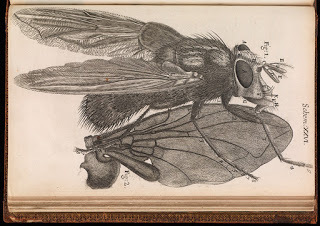 Looking through a microscope he could see further than anyone ever could before, and he showed us this tiny world of everyday things made enormous and wonderful, with huge fold-out pages. People were amazed by Hooke’s book – Samuel Pepys stayed up all night marvelling at it.
Looking through a microscope he could see further than anyone ever could before, and he showed us this tiny world of everyday things made enormous and wonderful, with huge fold-out pages. People were amazed by Hooke’s book – Samuel Pepys stayed up all night marvelling at it. 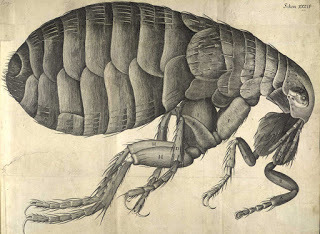 The everyday pest is revealed as beautiful; the flea is ‘adorn’d with a curiously polish’d suit of sable Armour’ and ‘multitudes of sharp pinns, shap’d almost like Porcupine’s Quills.’
The everyday pest is revealed as beautiful; the flea is ‘adorn’d with a curiously polish’d suit of sable Armour’ and ‘multitudes of sharp pinns, shap’d almost like Porcupine’s Quills.’ Hooke also draws the mind-boggling face of a fly. And we find the insect face is hard to love.
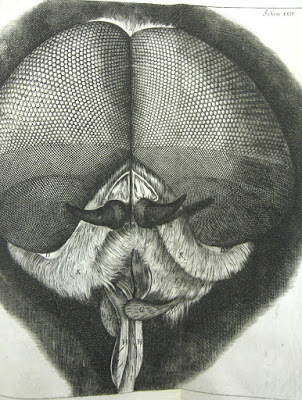 The face of a fly
The face of a flyIt doesn’t map that well onto the tetrapod look. It’s those mouthparts. The flea has at least a nice moustache - but then - HELP! - it has a pair of legs growing out of its chin. Segments, exoskeletons and too many legs are also not ideal for building our empathy with arthropods.
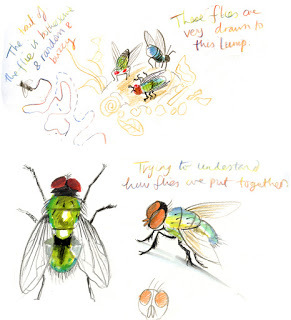
It is basic human behaviour to feel disgust at insects – no doubt due to instincts of self-preservation against contagion. Lots of insect life cycles are frankly disturbing – especially the parasitic wasps. Most of human history has been a battle against innumerable critters out to infest you & contaminate YOUR FOOD.
Here are some sketches of flies in my garden and young locusts and cockroaches at London Zoo.
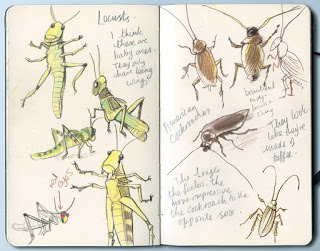 But how does it feel to be an insect? Does it feel like something to be an insect? Some research seems to indicate that bees may experience different emotional states – emotions are useful for instigating behaviour – and it appears that dopamine plays a role in bee decision-making – as it does for us. It could be that emotions are essential for creating all behaviour so all animals that have behaviour are experiencing emotions – so life feels like something for all of them.
But how does it feel to be an insect? Does it feel like something to be an insect? Some research seems to indicate that bees may experience different emotional states – emotions are useful for instigating behaviour – and it appears that dopamine plays a role in bee decision-making – as it does for us. It could be that emotions are essential for creating all behaviour so all animals that have behaviour are experiencing emotions – so life feels like something for all of them. No-one is a mindless automaton.
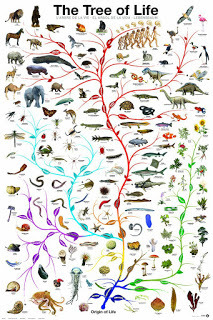 As fellow organisms on the Great Tree of Life, insects and us are related, but our branching apart is very distant. The Last Common Ancestor of us & insects was something Pre-Pre-Cambrian, something that maybe lived between 600 and 700 million years ago, and we share with it the invention of bilateral symmetry.
As fellow organisms on the Great Tree of Life, insects and us are related, but our branching apart is very distant. The Last Common Ancestor of us & insects was something Pre-Pre-Cambrian, something that maybe lived between 600 and 700 million years ago, and we share with it the invention of bilateral symmetry.
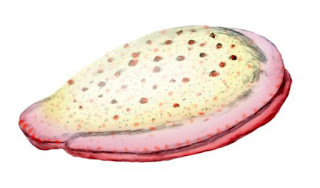 a KimberellaNo-one has found that ancestor yet,
a KimberellaNo-one has found that ancestor yet, so here is a Kimberella who might have been a bit similar, looking like a cross between a macaron, a sea-slug and a toasted cheese sandwich.
Picture Book Insects
So, who has crossed over the human-insect divide (that empathy chasm) and involved insects in their picture books? Here are a few of my favourites. Do tell me yours! Ant & Bee
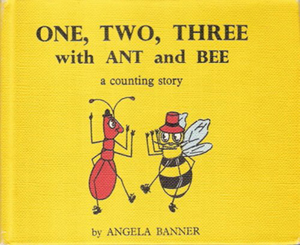 I remember having these little books when I was small. I found the small size and relatively large text quite exciting, especially as some words would be picked out in red. Here is Ant tucked up ill in bed.
I remember having these little books when I was small. I found the small size and relatively large text quite exciting, especially as some words would be picked out in red. Here is Ant tucked up ill in bed.  Here are some incredible geometrical cakes from when Ant and Bee go shopping.
Here are some incredible geometrical cakes from when Ant and Bee go shopping.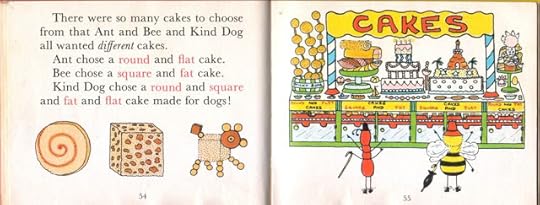 Tadpole’s Promise by Jeanne Willis and Tony Ross
Tadpole’s Promise by Jeanne Willis and Tony Ross
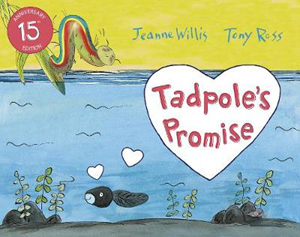
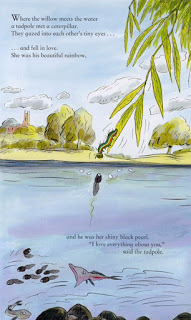 from Tadpole's Promise
from Tadpole's Promise
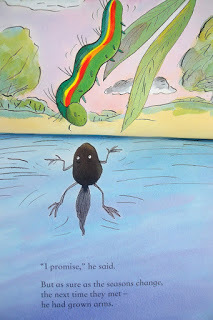 from Tadpole's Promise
from Tadpole's PromiseWhere water meets willow two creatures meet. Using the page fold to show the intersection of air and water, amphibian meets insect and both must metamorphose.
I am so glad that, as a mammal, I do not have to undergo this sort of utter transformation. Du Iz Tak by Carson Ellis
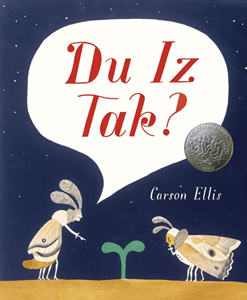 Insecty creatures find a shoot and tend it, building an extravagant plant house which gets beset by spider and bird, flowers and eventually wilts.
Insecty creatures find a shoot and tend it, building an extravagant plant house which gets beset by spider and bird, flowers and eventually wilts. 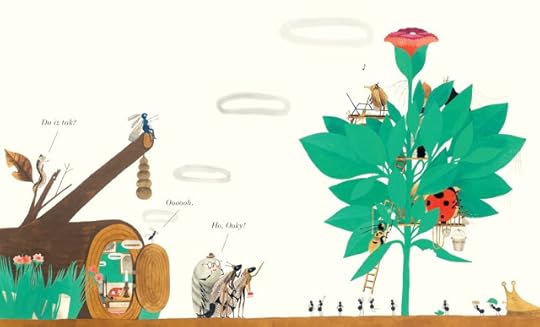 from Du Iz Tak? by Carson Ellis
from Du Iz Tak? by Carson Ellis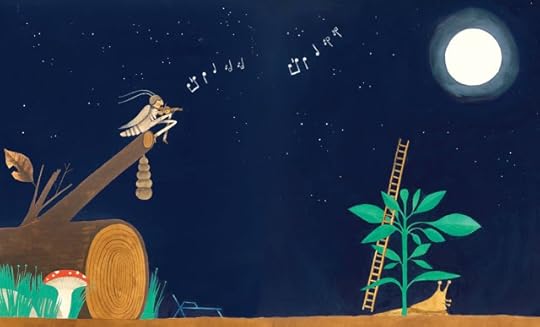 from Du Iz Tak? by Carson Ellis
from Du Iz Tak? by Carson Ellis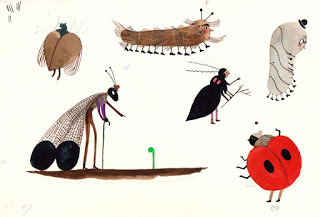 Character sketches by Carson Ellis Like tadpole’s promise, the cast of insects are caught in the cycles of nature and changing seasons, but these ones end with new beginnings and lots of new shoots sprouting.
Character sketches by Carson Ellis Like tadpole’s promise, the cast of insects are caught in the cycles of nature and changing seasons, but these ones end with new beginnings and lots of new shoots sprouting. The insect ones speak their own dialect but you can pick it up…I think they may be using bad language on this page:
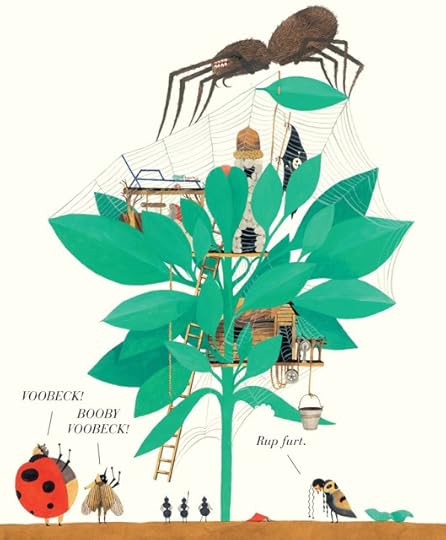 from Du Iz Tak? by Carson Ellis
from Du Iz Tak? by Carson EllisHere are some more beautiful insects: a buzzing meadow garden from Suzanne Barton’s Butterfly Dance,
 from The Buttefly Dance by Suzanne Barton a humming insect Soup Kitchen from Helen Cooper’s Delicious,
from The Buttefly Dance by Suzanne Barton a humming insect Soup Kitchen from Helen Cooper’s Delicious,
 From Delicious by Helen Cooper and the most friendly-and-engaging-ever critters here by Yuval Zommer.
From Delicious by Helen Cooper and the most friendly-and-engaging-ever critters here by Yuval Zommer.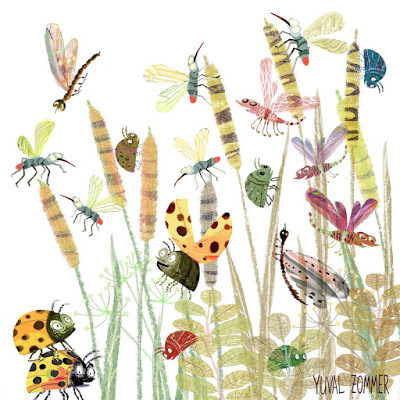 artwork by Yuval Zommer
artwork by Yuval Zommer
Garden QuestOn holiday on a Greek Island I found this magnificent beetle & handsome grasshopper.
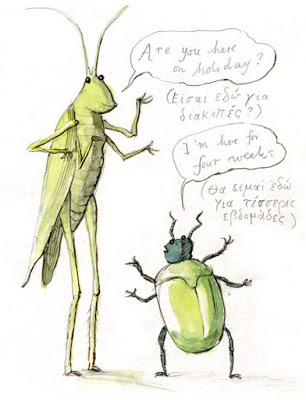 What would they say to each other? What adventures could they have?
What would they say to each other? What adventures could they have? I imagined them going on holiday to Mount Zakynthos, perhaps eating a large Greek Salad washed down with an unwise amount of Ouzo and then an ill-fated boat trip…

 I wondered about a story for them; perhaps Grasshopper could be Don Quixote to Beetle’s Sancho Panza. Maybe a Quest that takes place all in one garden, with the tiny insects travelling from one end to the other, beset with adventures and dangers.
I wondered about a story for them; perhaps Grasshopper could be Don Quixote to Beetle’s Sancho Panza. Maybe a Quest that takes place all in one garden, with the tiny insects travelling from one end to the other, beset with adventures and dangers. 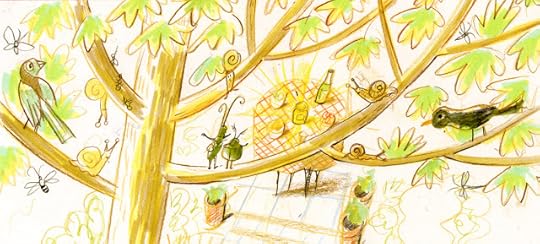 Garden Quest - from Mini's sketchbook
Garden Quest - from Mini's sketchbook Garden Quest - from Mini's sketchbookWell, as often happens, this didn’t really seem to work. But then I was asked to make some pieces for the John Radcliffe Hospital Audiology Department. The idea was to make something engaging and distracting for young patients, with lots of details to spot on repeat appointments. So I tried to turn Grasshopper and Beetle’s Garden Quest into a picture-story for a wall. I thought I could make panoramas of a garden world full of minibeasts to spot. Playing around with tracing paper I wanted to make something multi-layered.
Garden Quest - from Mini's sketchbookWell, as often happens, this didn’t really seem to work. But then I was asked to make some pieces for the John Radcliffe Hospital Audiology Department. The idea was to make something engaging and distracting for young patients, with lots of details to spot on repeat appointments. So I tried to turn Grasshopper and Beetle’s Garden Quest into a picture-story for a wall. I thought I could make panoramas of a garden world full of minibeasts to spot. Playing around with tracing paper I wanted to make something multi-layered.
 It turned into three panoramas which really go from right to left down a garden (the opposite way to a book).
It turned into three panoramas which really go from right to left down a garden (the opposite way to a book).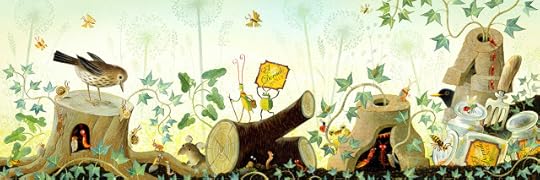 Grasshopper and Beetle find a label for El Dorado honey on the compost heap.
Grasshopper and Beetle find a label for El Dorado honey on the compost heap.  They take it back to their home in the grass then go in search of it,
They take it back to their home in the grass then go in search of it,
 discovering a honey picnic under the trees.
discovering a honey picnic under the trees.
 Critters under a broken pot
Critters under a broken pot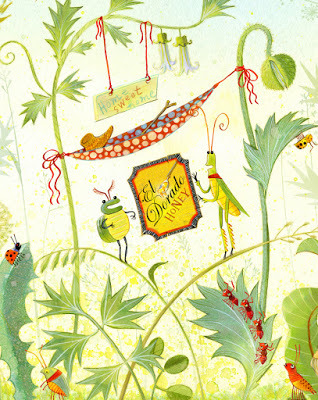 Grashopper and Beetle's meadow home
Grashopper and Beetle's meadow home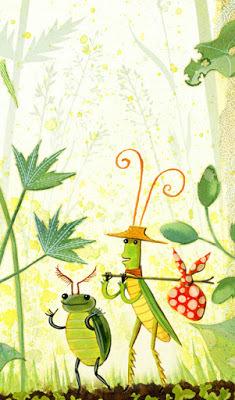 Questing
Questing El Dorado honey attracting attentionInsectageddonNowadays there is grim news about insects from lots of fronts. There has been widespread loss of pollinating insects across Britain in the last 40 years. Insects are also at risk from shrinking habitat ranges due to climate change. There are shifting baselines and clean windscreens.
El Dorado honey attracting attentionInsectageddonNowadays there is grim news about insects from lots of fronts. There has been widespread loss of pollinating insects across Britain in the last 40 years. Insects are also at risk from shrinking habitat ranges due to climate change. There are shifting baselines and clean windscreens.
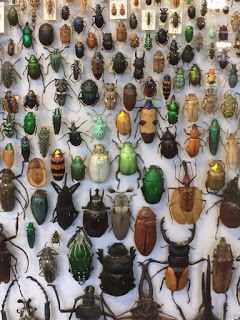 Beetles at the Natural History Museum, Oxford
Beetles at the Natural History Museum, OxfordAre we pulling out the Jenga bricks from the web of life? The tower gets rickettier, but it still looks like a tower until…crash! – one too many bricks has gone. It seems so much minibeast life is unmeasured, unrecorded, unknown. And that’s the stuff on land – what about the invisible areas we don’t even think about – under the ground, under the sea – ploughing either of those up is wrecking a world that is already there.
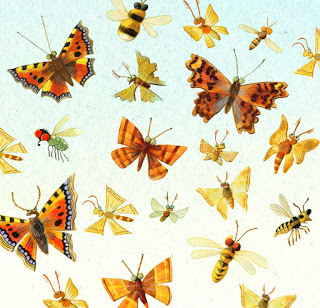
So what is causing the disappearance of insects?
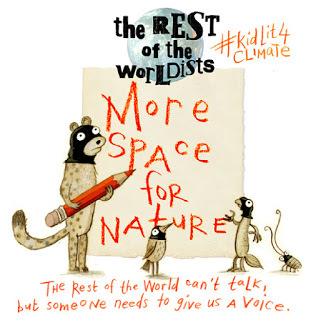 The causes, it seems, are: habitat loss, pesticides and climate change. What can we do about this? We can share our world with the wildlife in it! We can protect habitats: someone already lives there! We can set aside agricultural land margins and park margins for wild plants, as in this new law in Bavaria.We can treasure what we already have and make more. Edges and hedges and big trees are particularly good habitats…verges, parks, motorway margins, front gardens – all are opportunities for an edge habitat.
The causes, it seems, are: habitat loss, pesticides and climate change. What can we do about this? We can share our world with the wildlife in it! We can protect habitats: someone already lives there! We can set aside agricultural land margins and park margins for wild plants, as in this new law in Bavaria.We can treasure what we already have and make more. Edges and hedges and big trees are particularly good habitats…verges, parks, motorway margins, front gardens – all are opportunities for an edge habitat. We can make our edgelands into mini wildernesses, mini jungles.
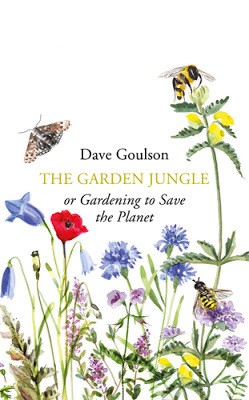 This book, The Garden Jungle by Dave Goulson, is about exactly that: the wildlife that lives right under our noses, in our gardens and parks, between the gaps in the pavement, and in the soil beneath our feet. It is published later in the year and I can’t wait to read it. The more minibeasts you know, the more you see, and the more you care about. With climate change we are in danger of a great global biodiversity simplification – losing specialists and gaining generalists. Climate change squeezes the range of animals as they migrate towards the climate they are used to – generally heading north then hitting the end of the range as they run out of habitat.
This book, The Garden Jungle by Dave Goulson, is about exactly that: the wildlife that lives right under our noses, in our gardens and parks, between the gaps in the pavement, and in the soil beneath our feet. It is published later in the year and I can’t wait to read it. The more minibeasts you know, the more you see, and the more you care about. With climate change we are in danger of a great global biodiversity simplification – losing specialists and gaining generalists. Climate change squeezes the range of animals as they migrate towards the climate they are used to – generally heading north then hitting the end of the range as they run out of habitat. We can make it easier for creatures to move by increasing & joining habitats – all those edges we already mentioned. But the utterly brilliant thing is that increasing our nature by reforesting and rewilding is one of the most effective ways of reducing atmospheric CO2 - nature can be our climate-change crash mat - but it’s also so much more – what an amazing win-win policy using more nature as a solution to our climate problems would be. Last week scientists and activists called for action on CO2 through natural climate solutions, through defending, restoring and re-establishing forests, peatlands, mangroves, salt marshes, natural seabeds and other crucial ecosystems. Here George Monbiot explains how to avert Climate catastrophe by rewilding.
We also can tackle the carbon dioxide in other ways: at the moment it is essentially free to put CO2 into our atmosphere. This is an enormous injustice and a robbery from young people and future inhabitants of earth. Putting a clear price on carbon would change this.
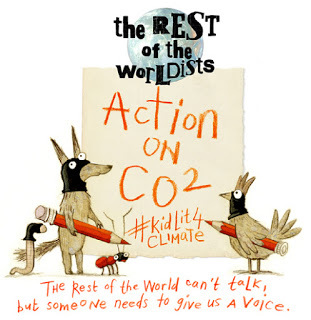 Meet the RelativesIn September last year, the House of Illustration ran a month’s challenge. It was linked to John Vernon Lord’s exhibition there.
Meet the RelativesIn September last year, the House of Illustration ran a month’s challenge. It was linked to John Vernon Lord’s exhibition there. 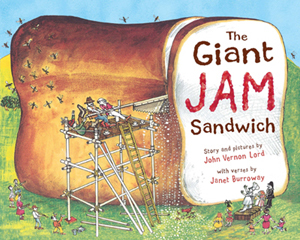 (John Vernon Lord is of course the inventor and illustrator of that classic insect book The GIANT JAM SANDWICH!)
(John Vernon Lord is of course the inventor and illustrator of that classic insect book The GIANT JAM SANDWICH!) In 2016 John had done a teeny drawing every day for the entire year and they were all on show. The challenge was to do a teeny (1 inch to 3cm) drawing a day for September. (Here are the winners.)
I particularly liked John’s insect drawings, I think partly because they’re life-sized. Here are his lovely beetle and fly.
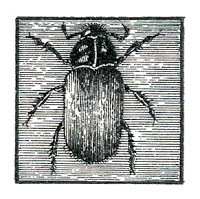 by John Vernon Lord
by John Vernon Lord
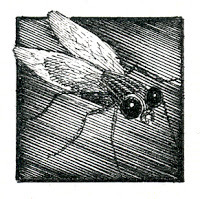 by John Vernon Lord
by John Vernon Lord I wondered about doing a month of 3cm square drawings of insects.
At the Natural History Museum at Tring there’s a wonderful collection of insects in cases. All have been impaled on a pin and labelled, in that classic insect-collecting way. Here are some of my sketches of the Tringsects.

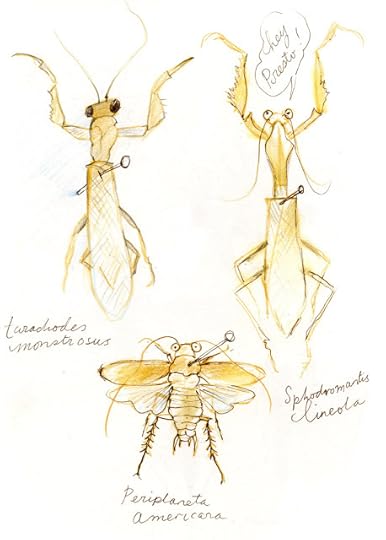
I wondered: what if the label, instead of saying ‘Periplaneta Americana’, said ‘Uncle Bert’? Could the insects start to become individuals you could care about?
So here are Captain Peacock, Mrs Henderson, Priscilla, FV Heffenfurter and Matilda.

And here are all the relatives.
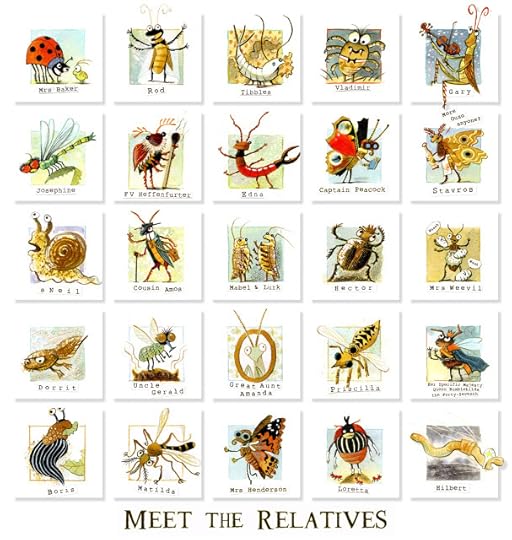
Lastly, a few links...
Rewilding BritainNatural Climate SolutionsBuglifeTrees for LifeCitizen's Climate Lobby UK
Published on April 07, 2019 21:00



